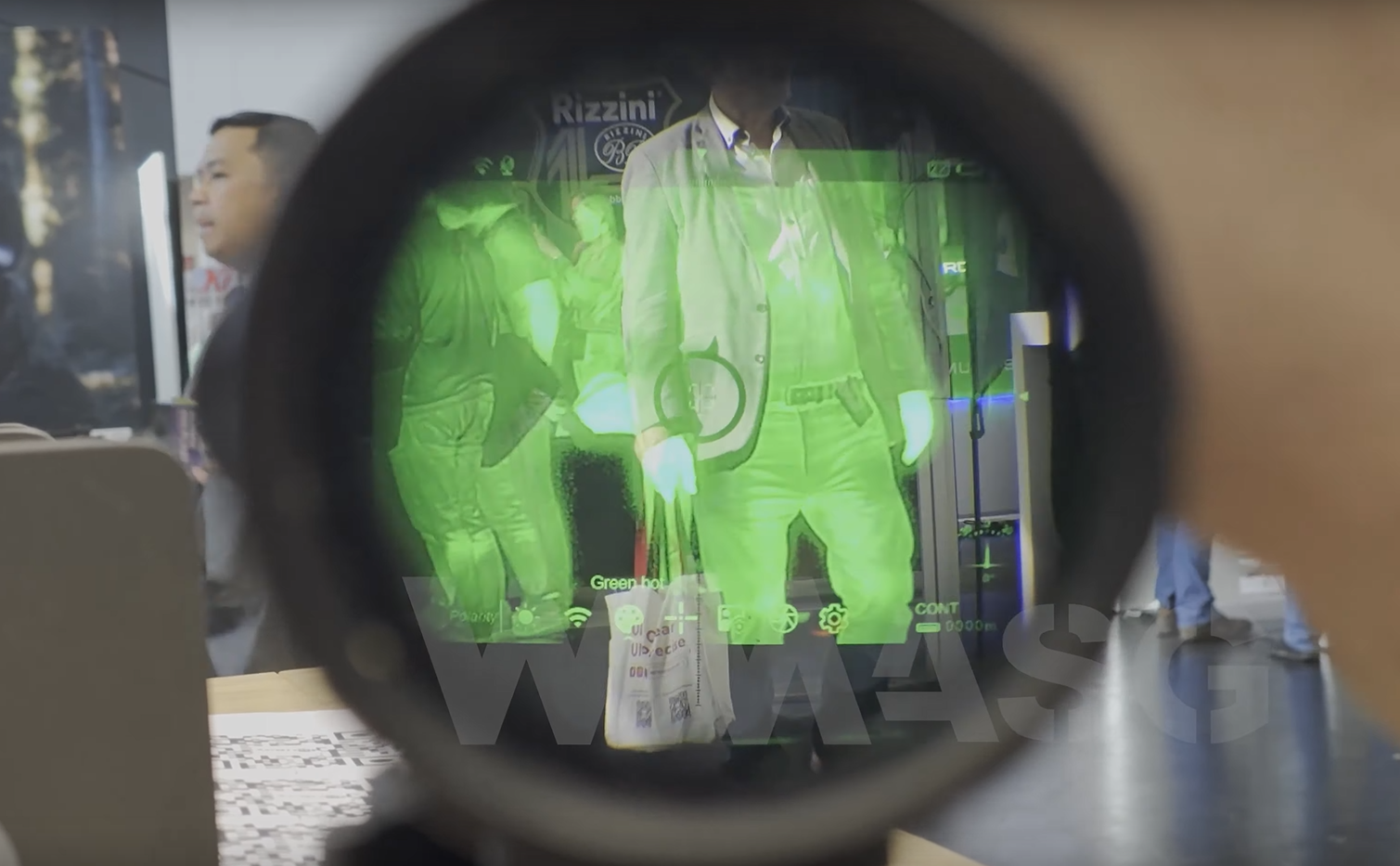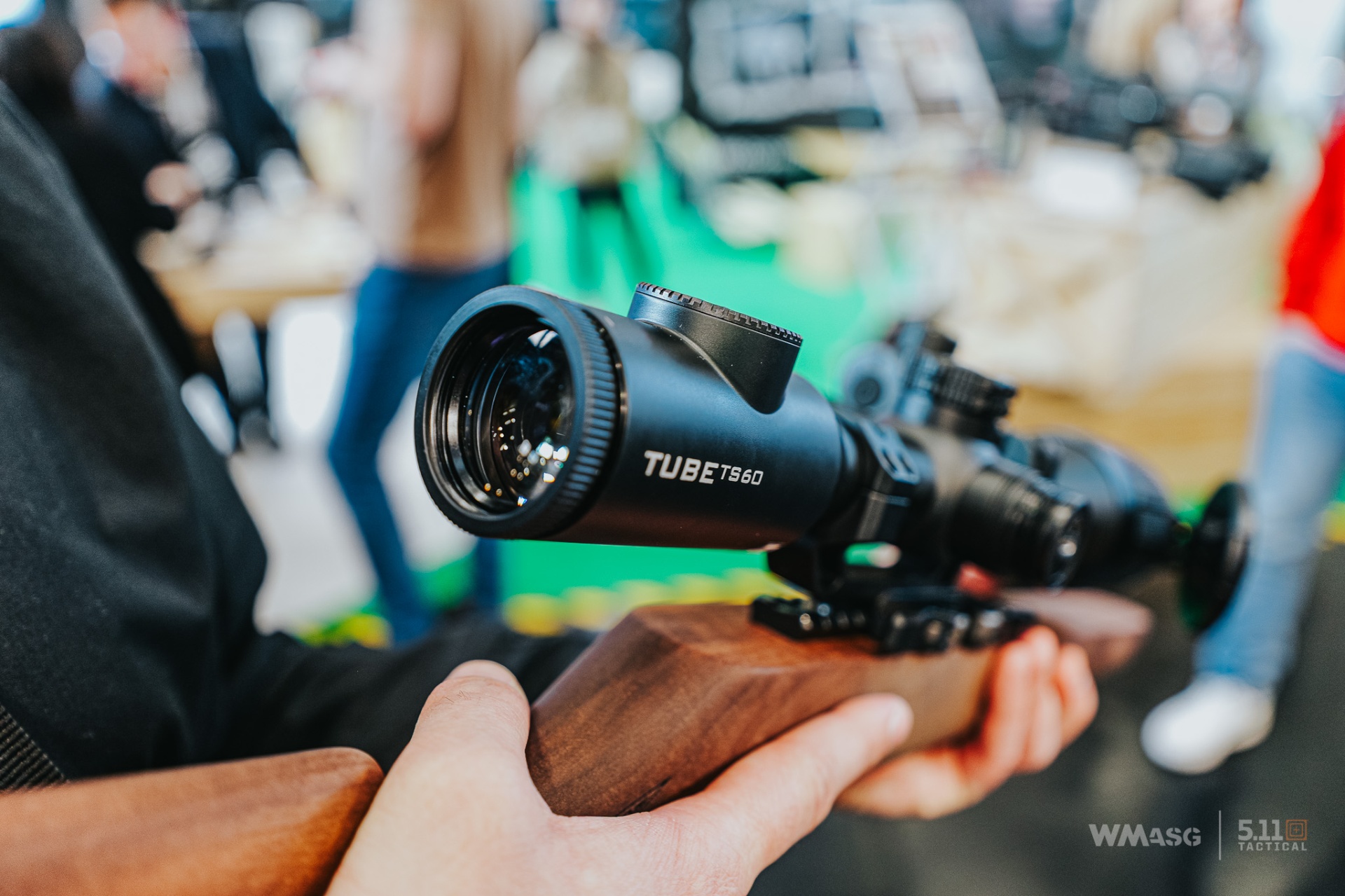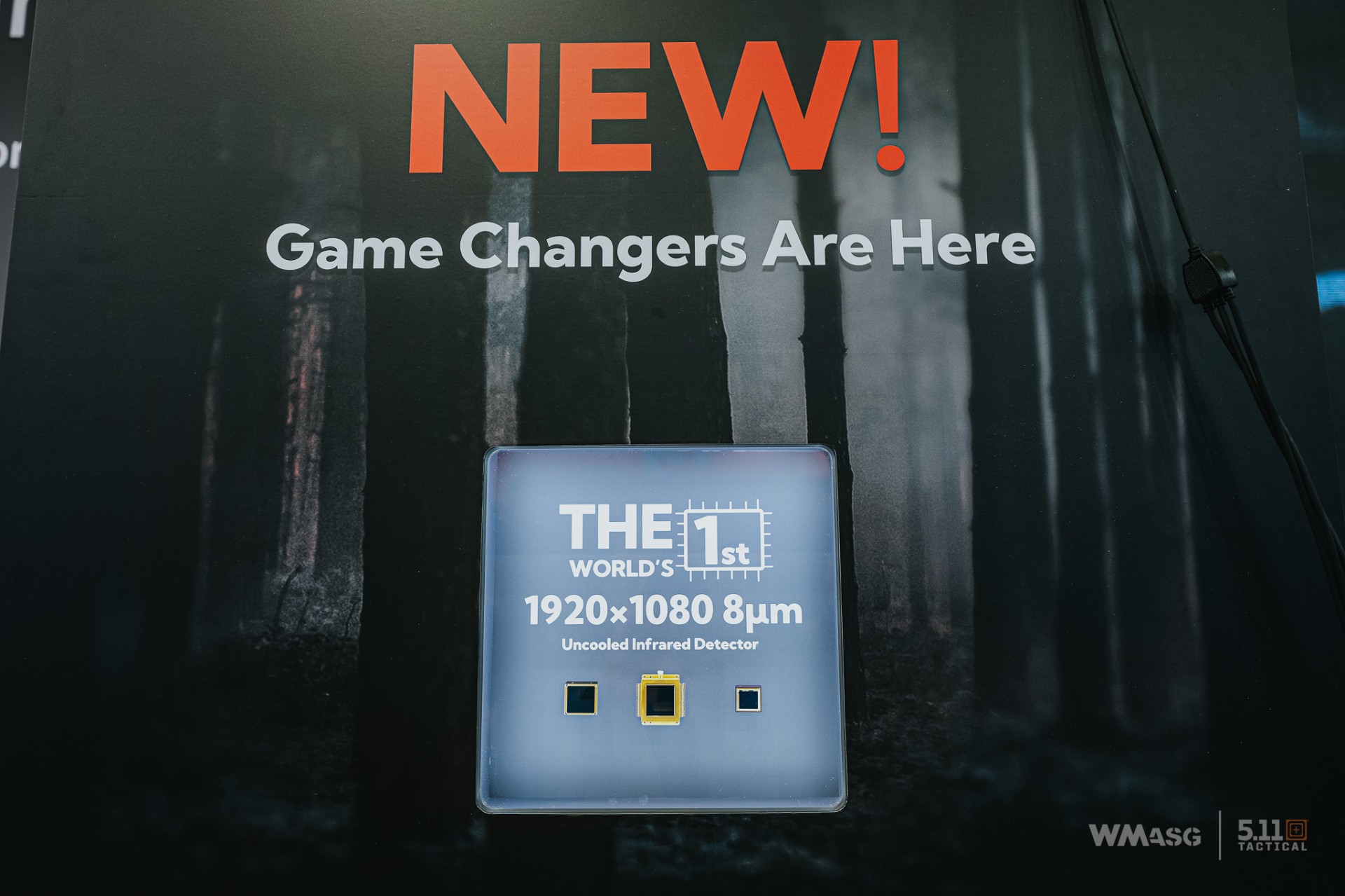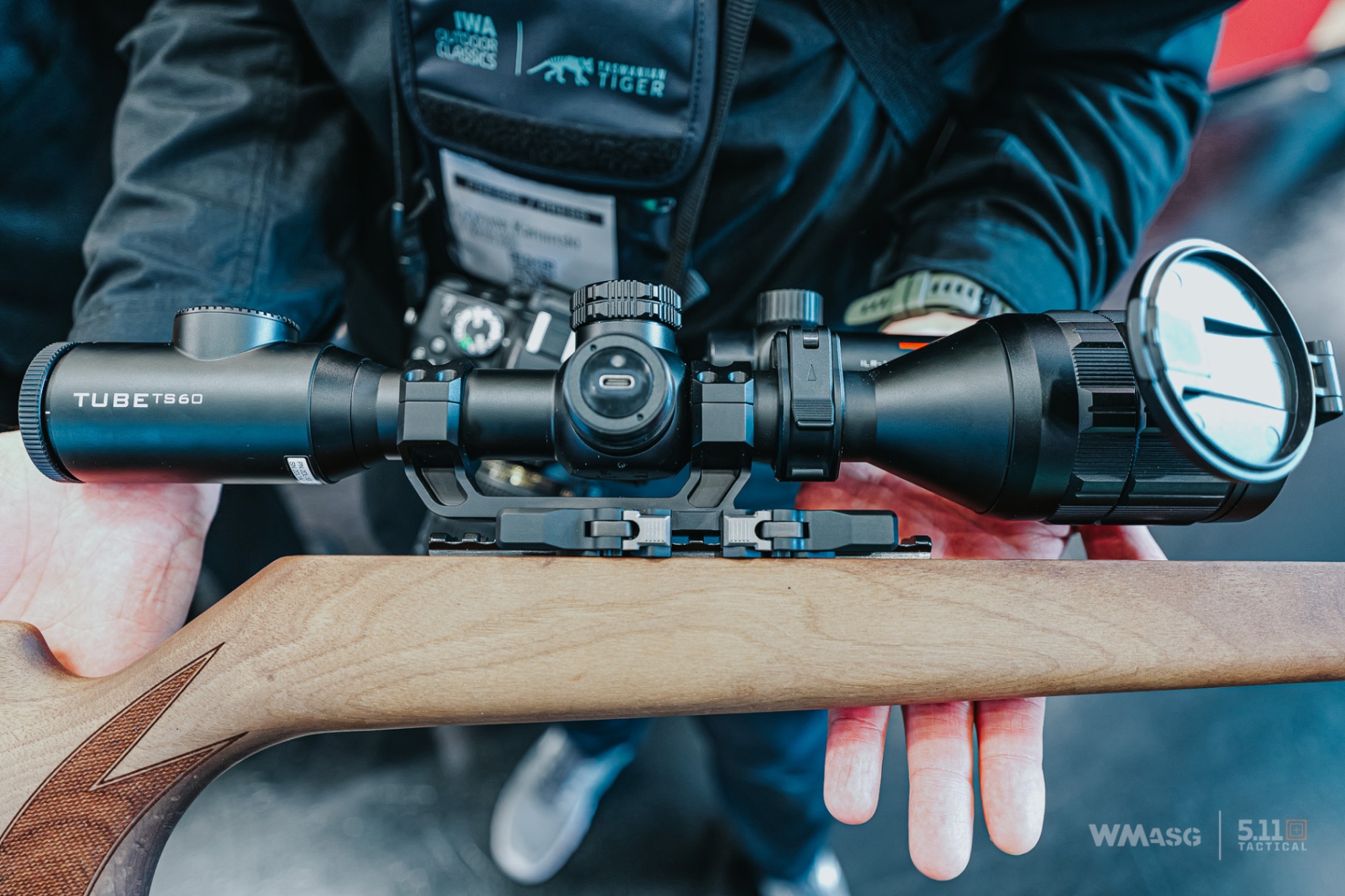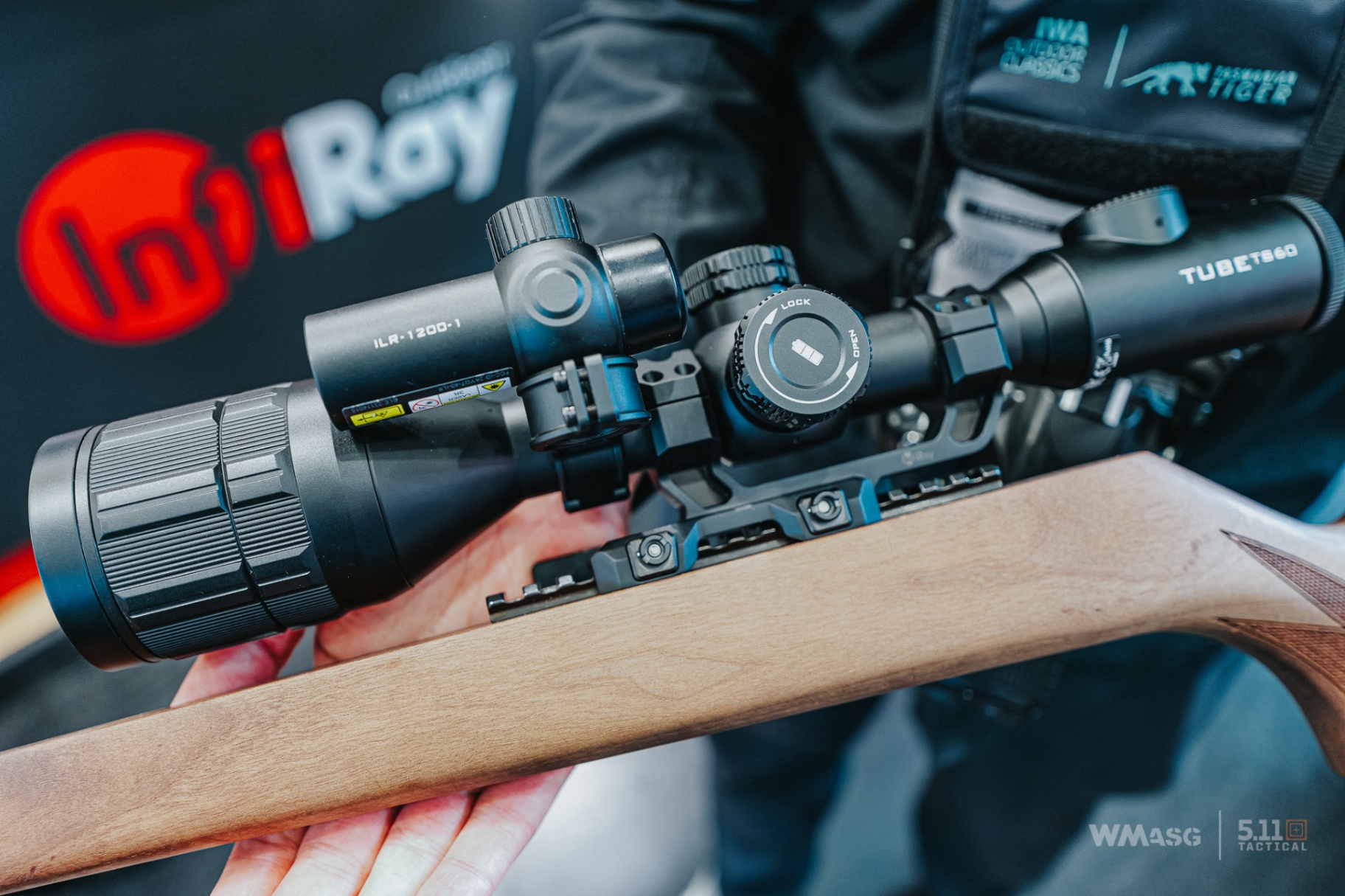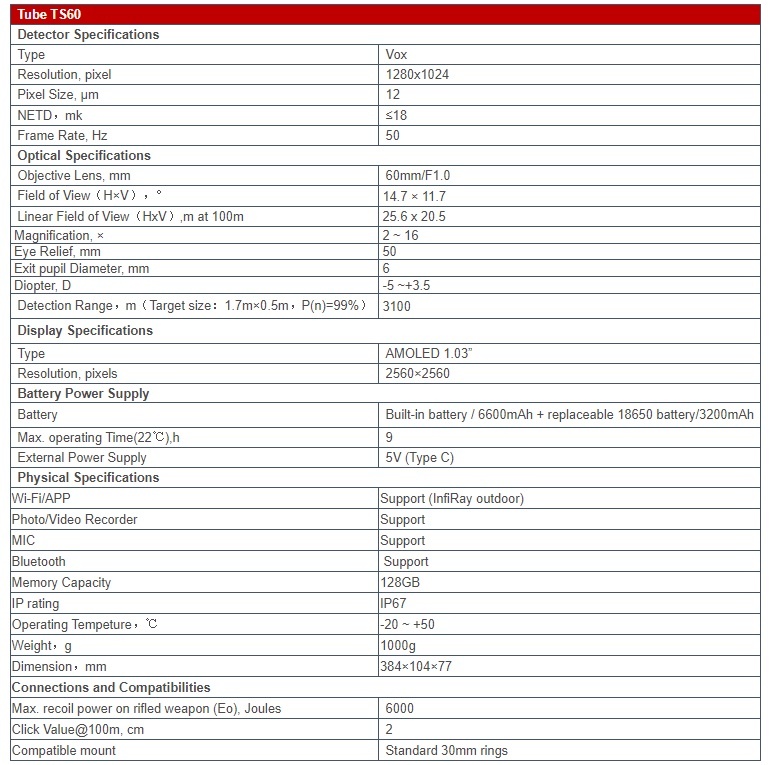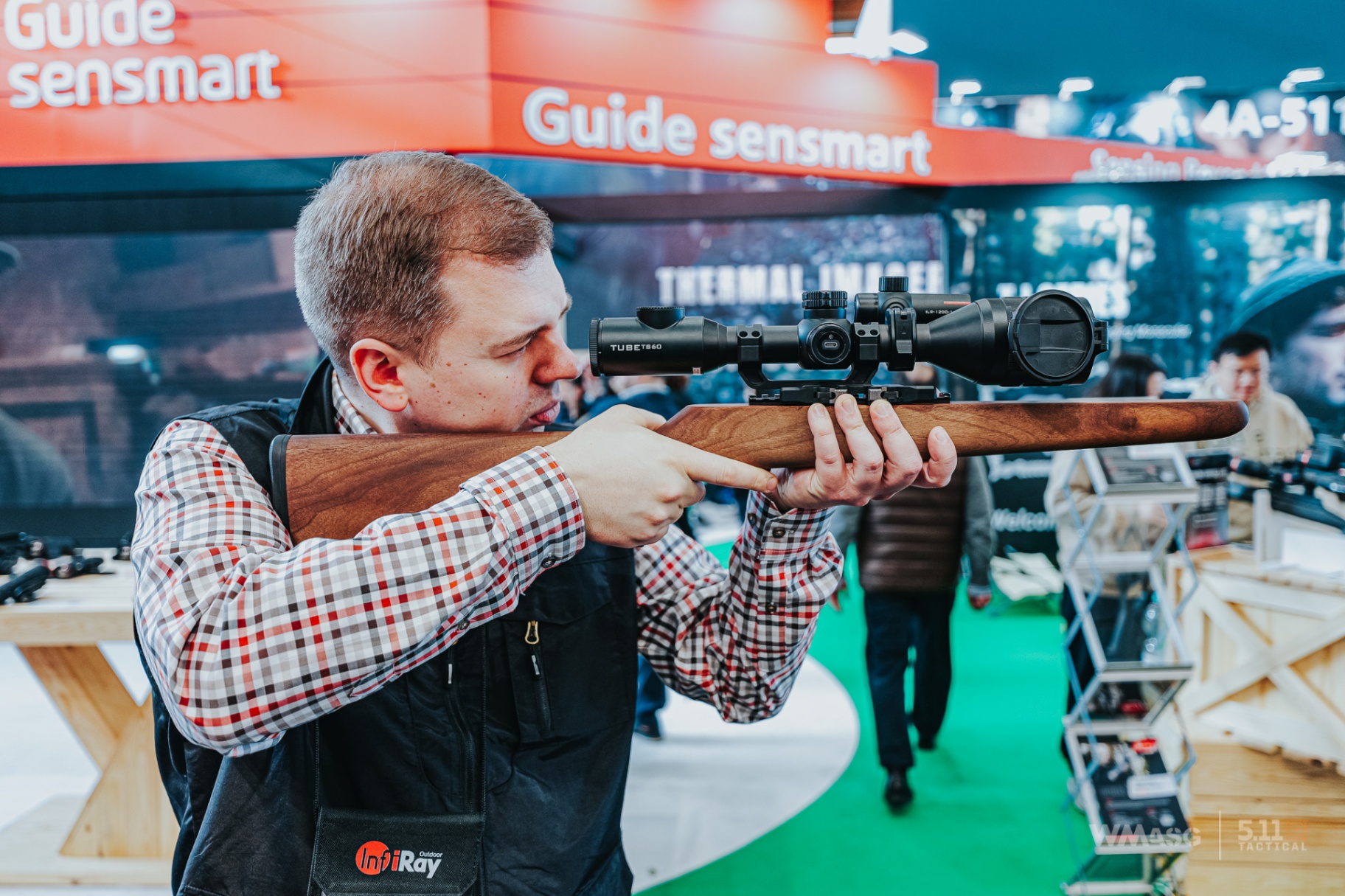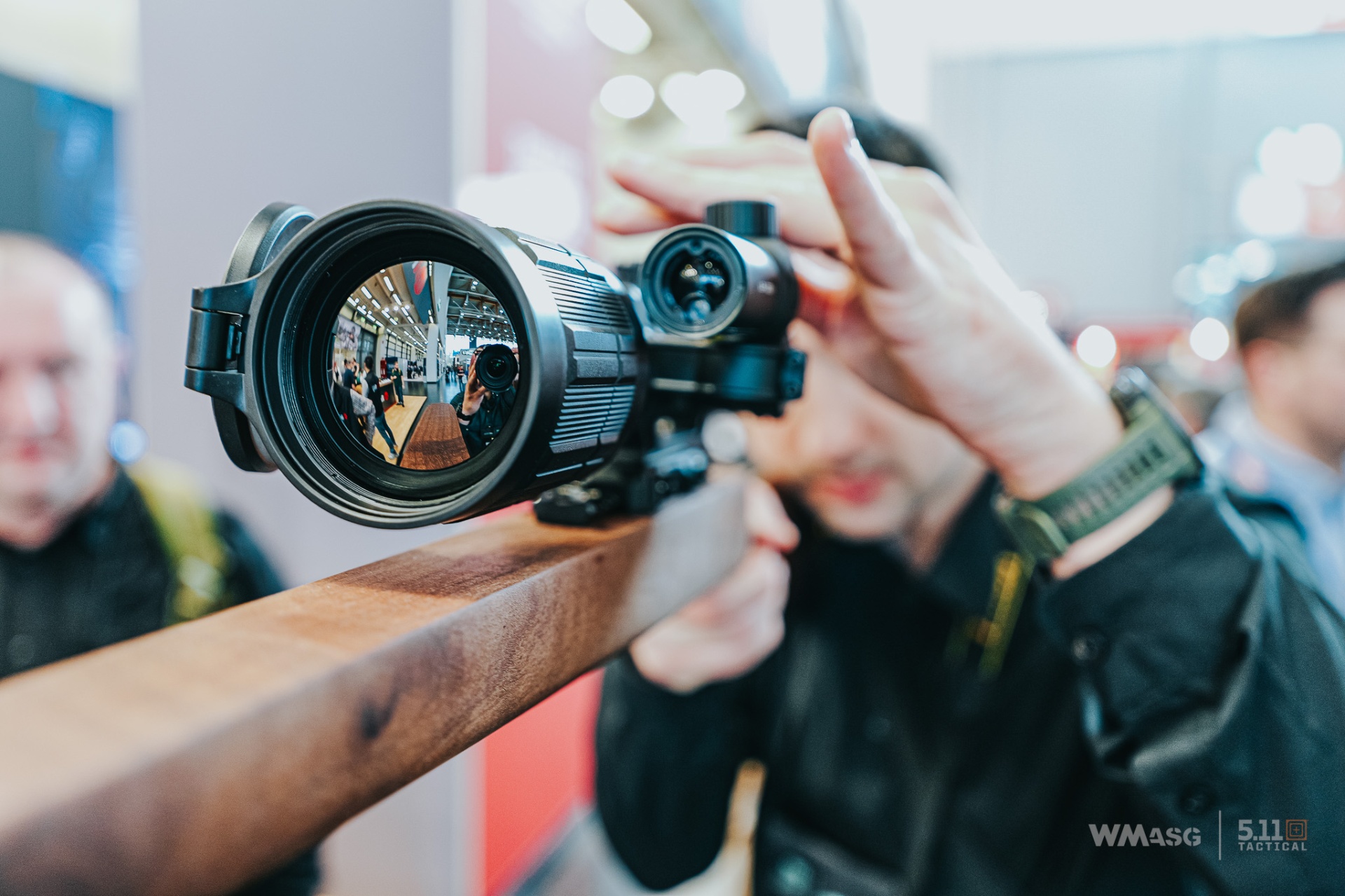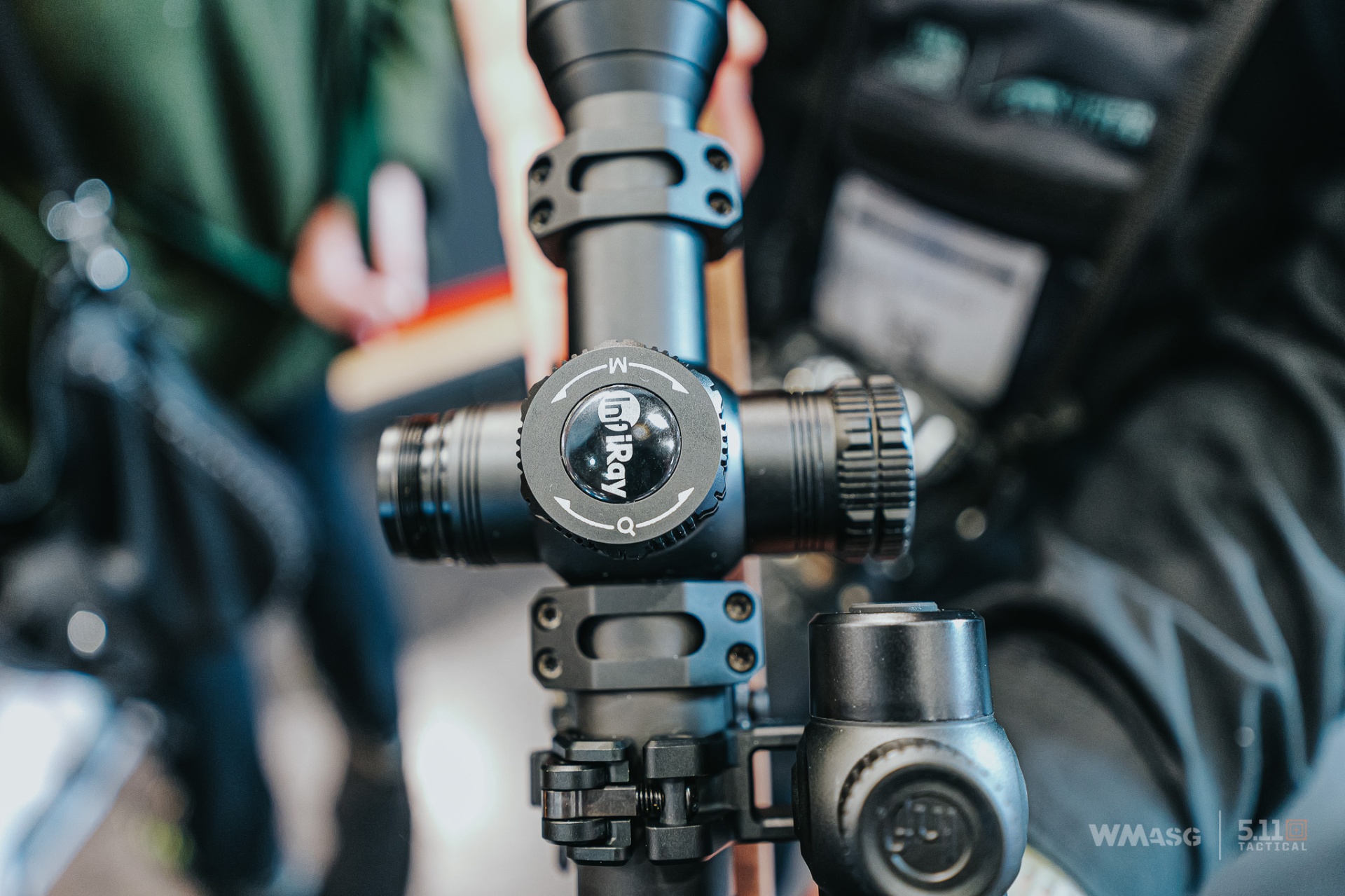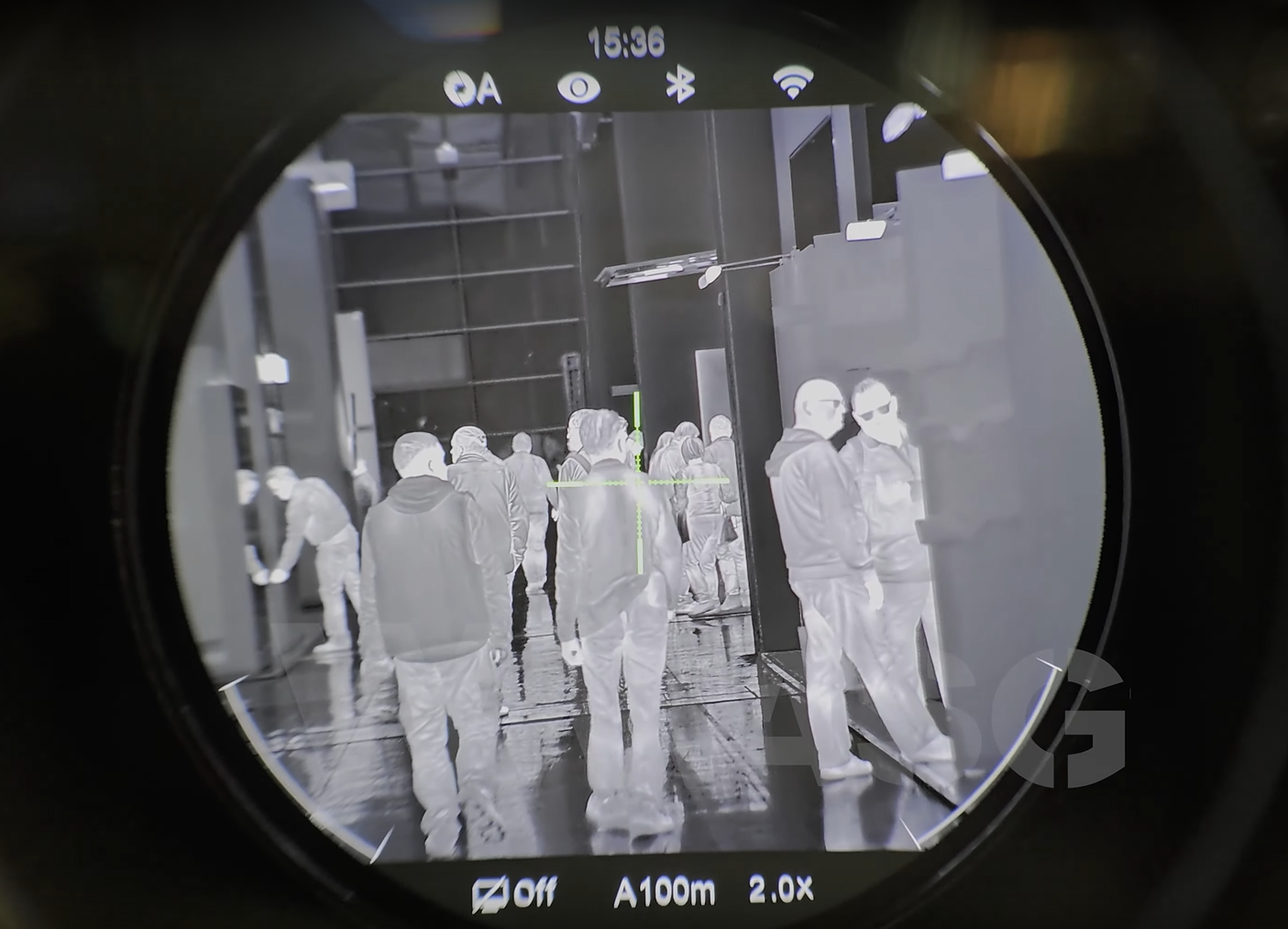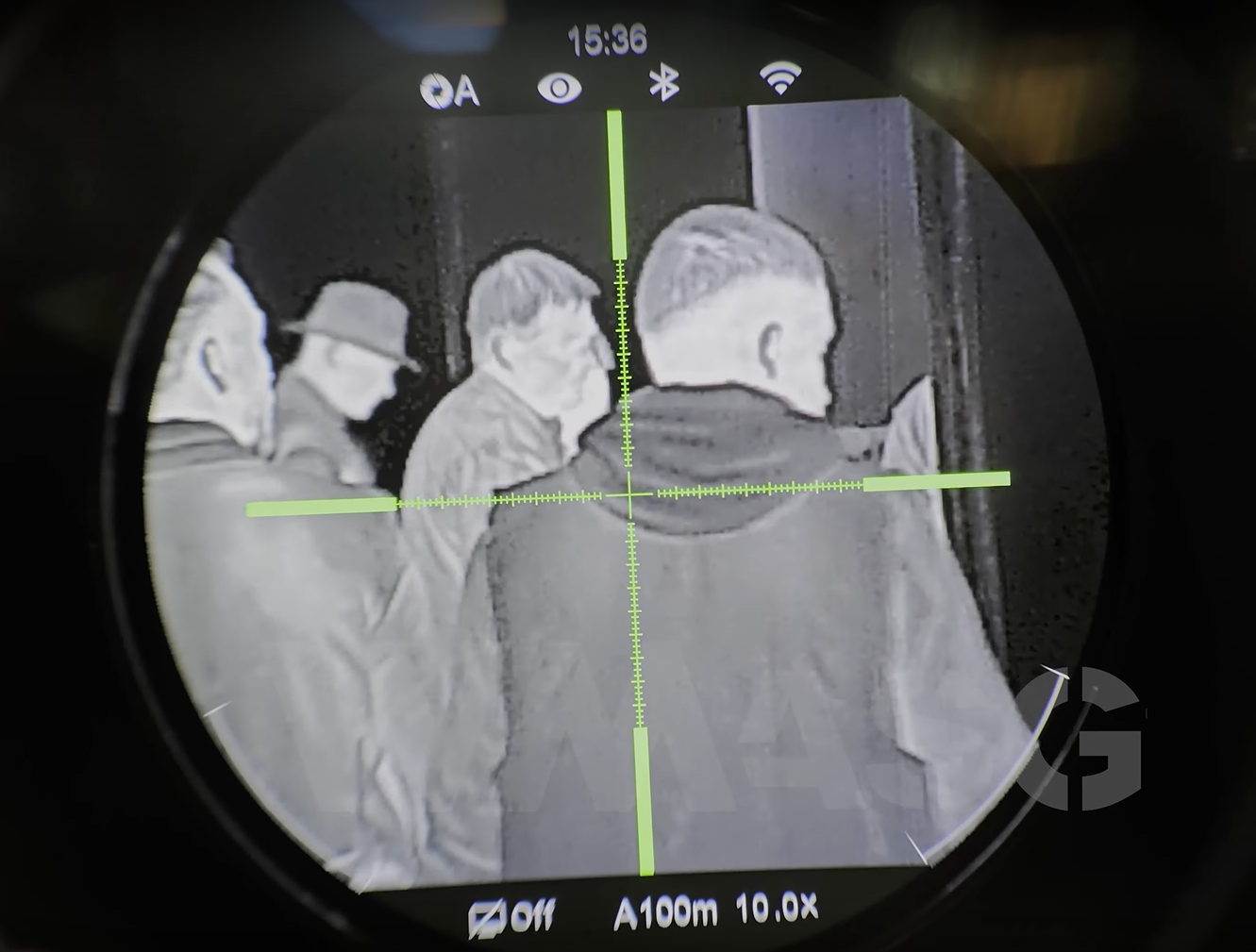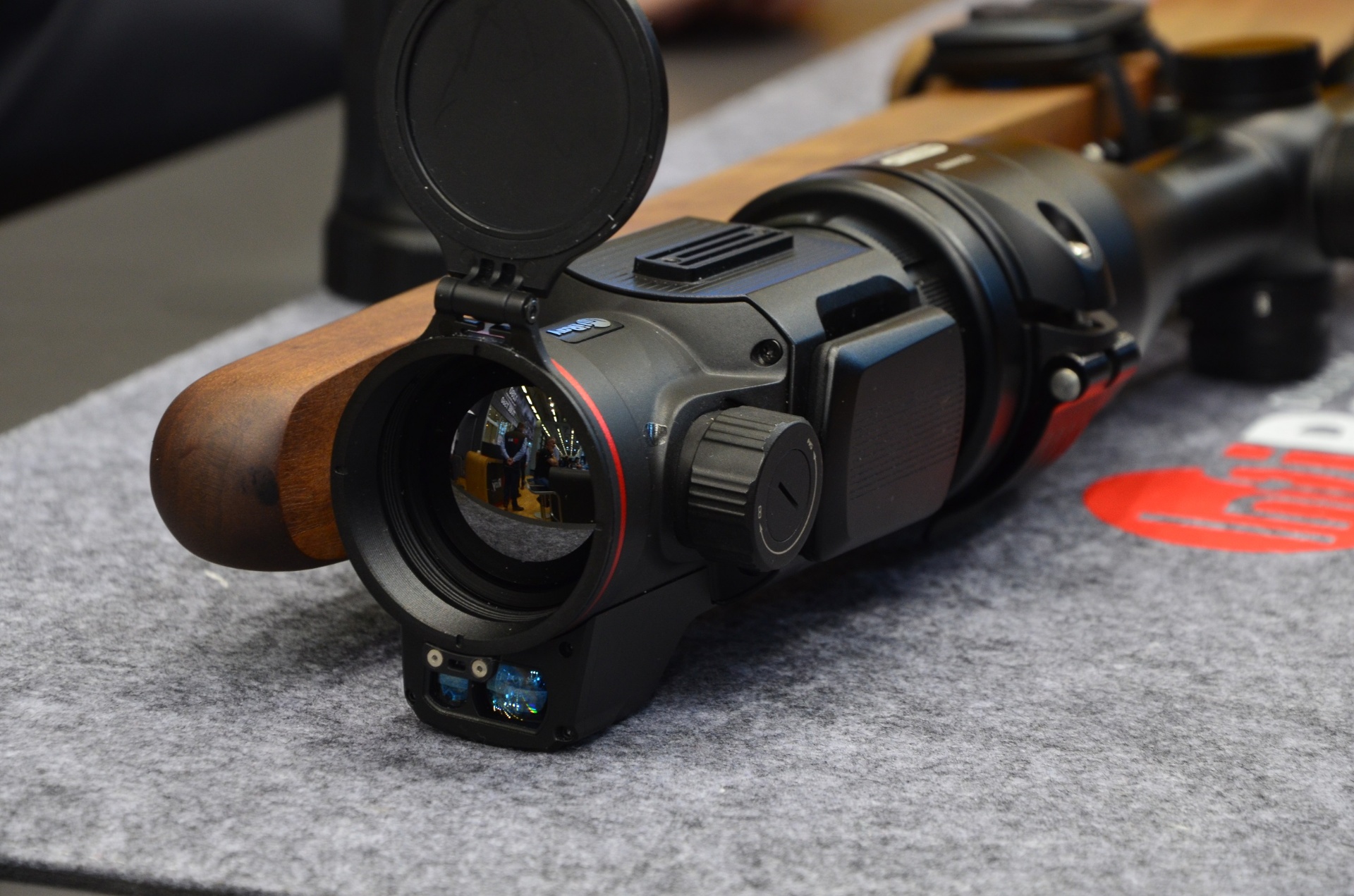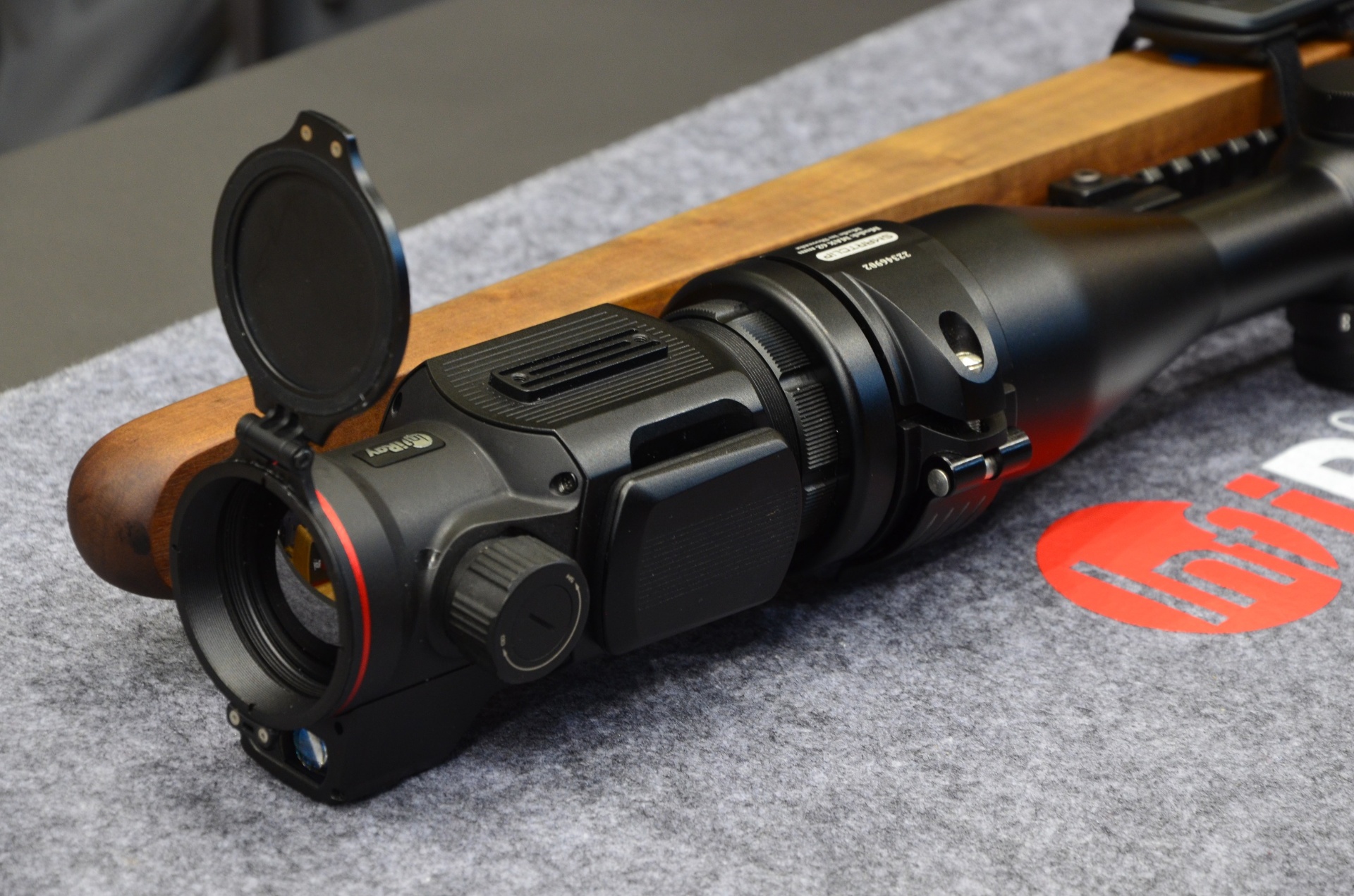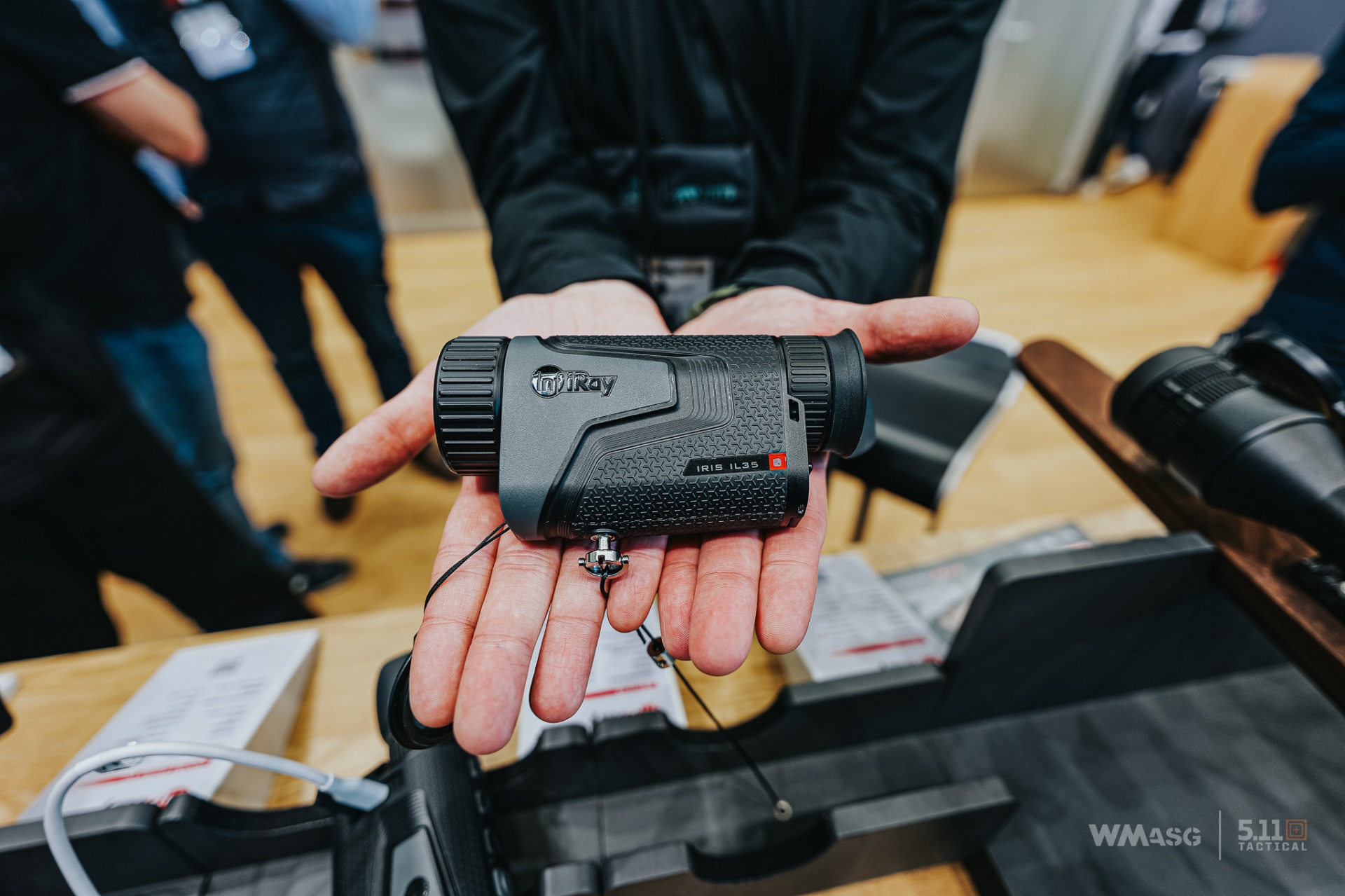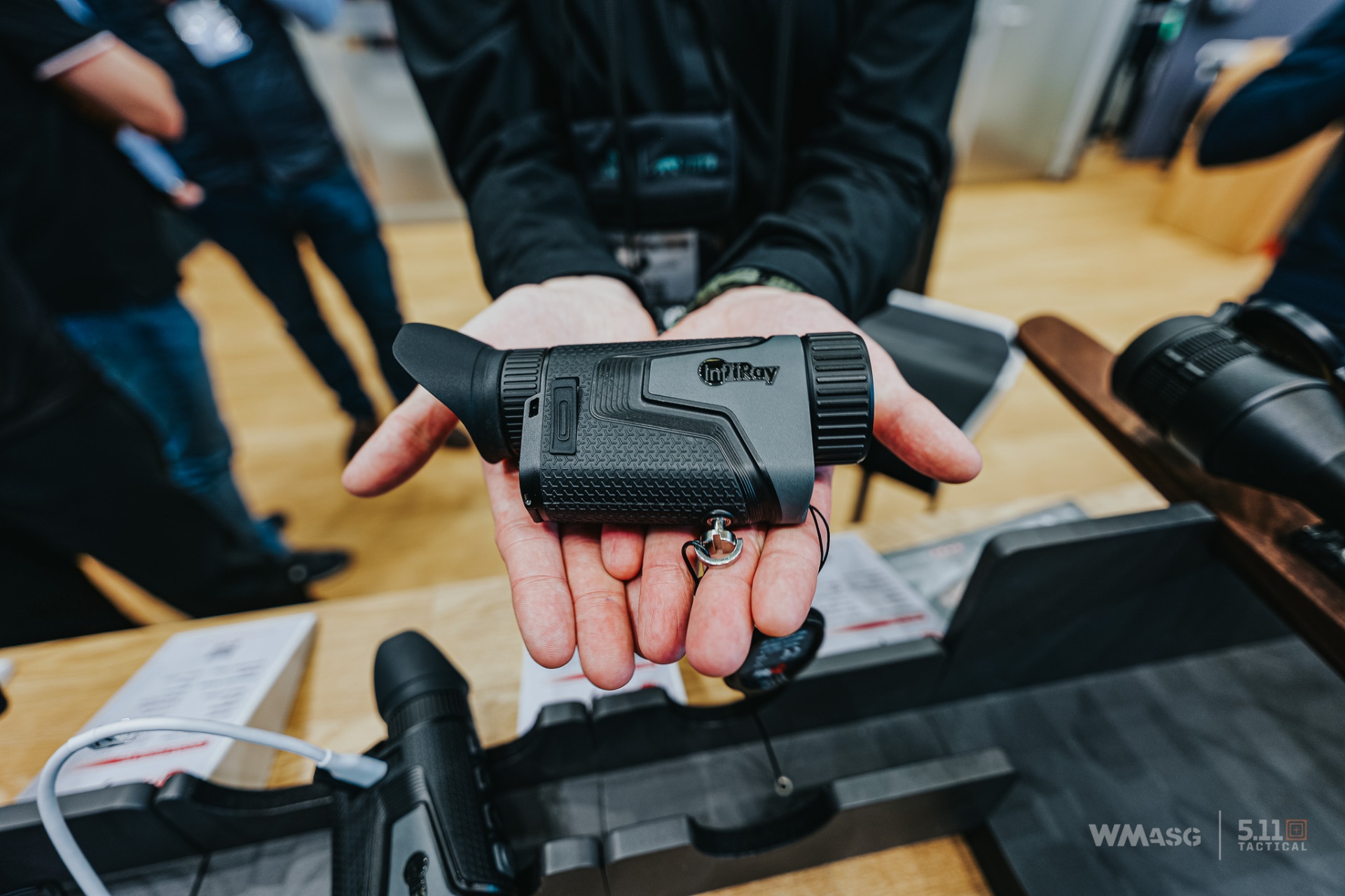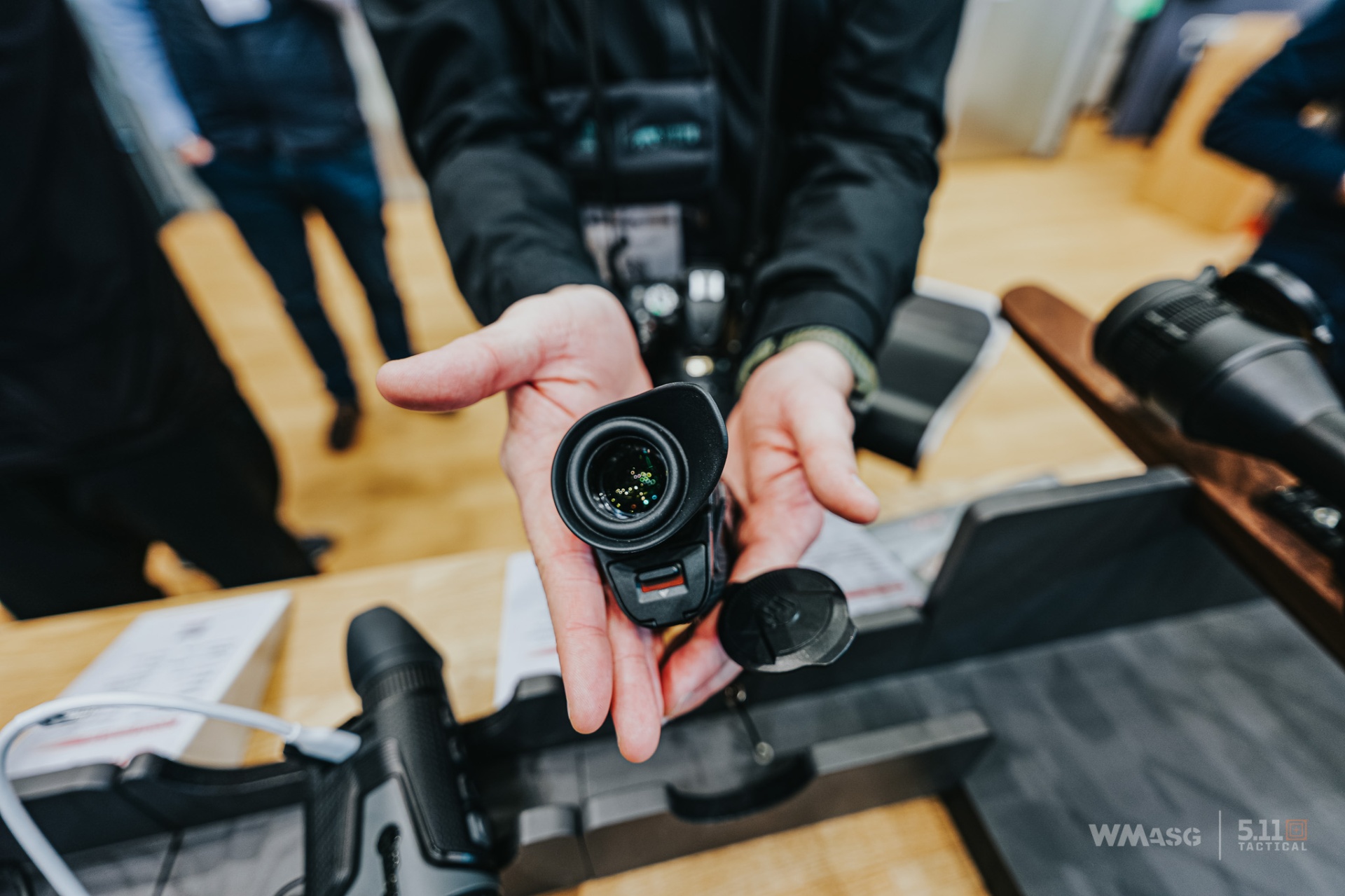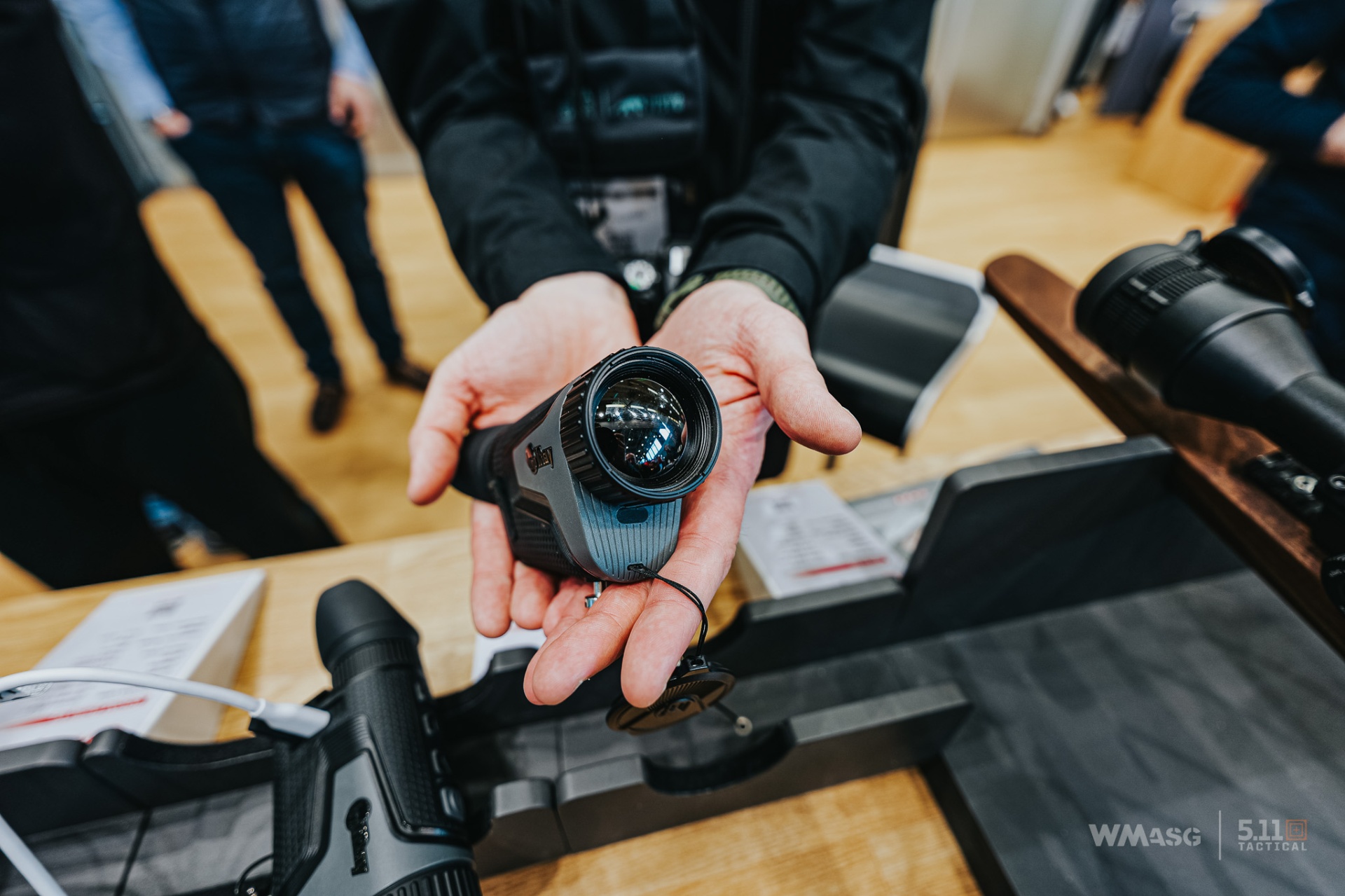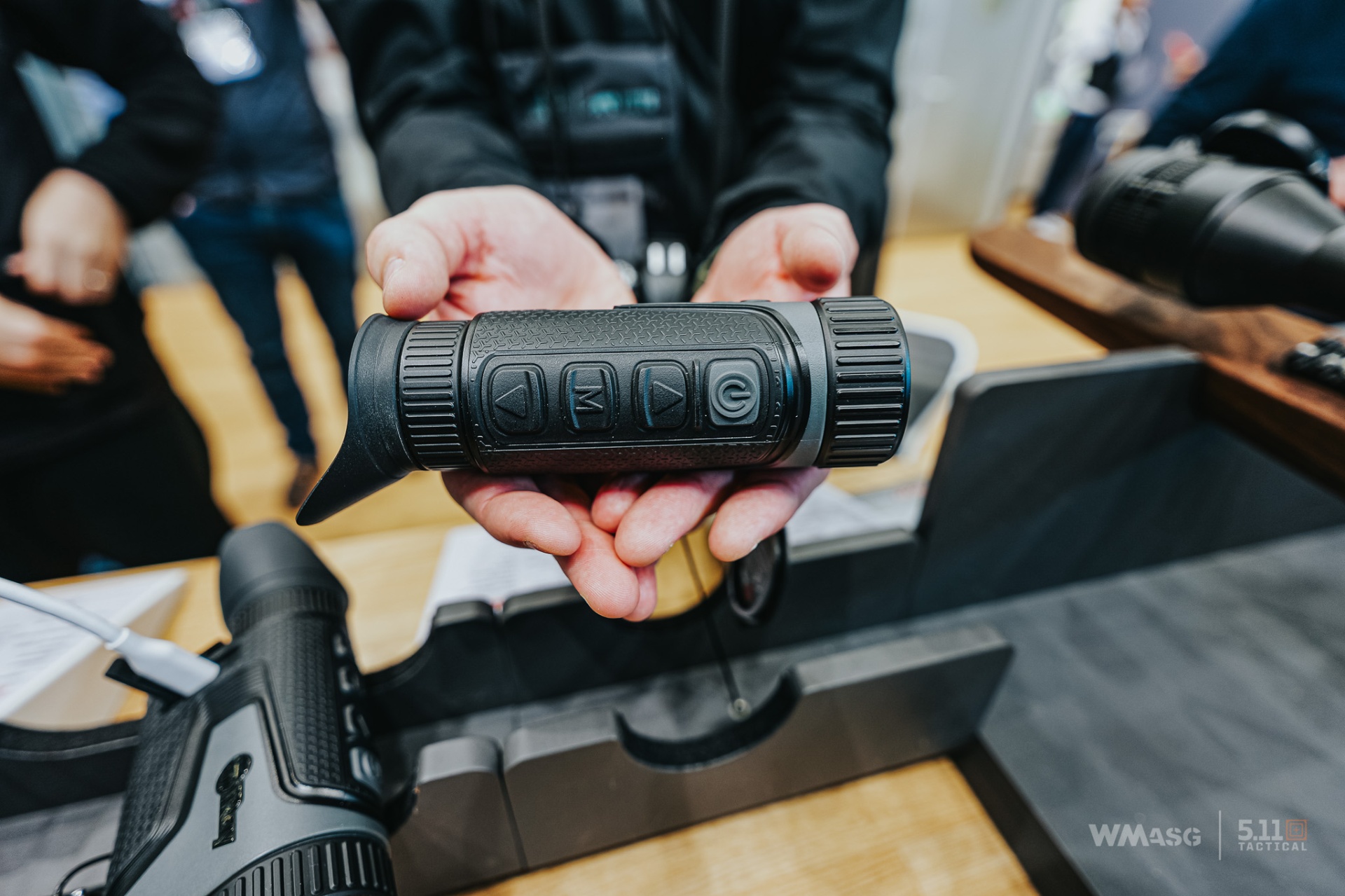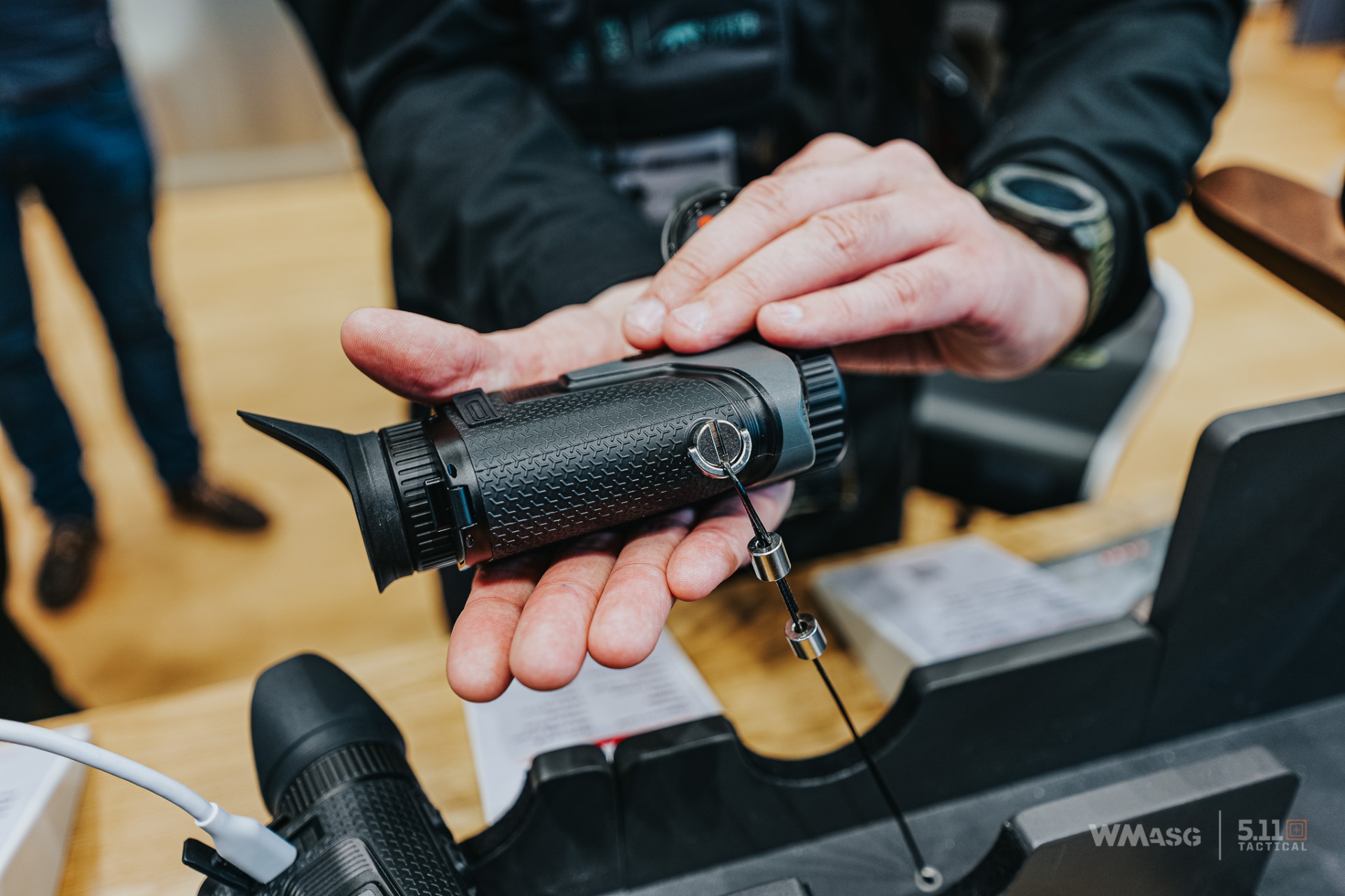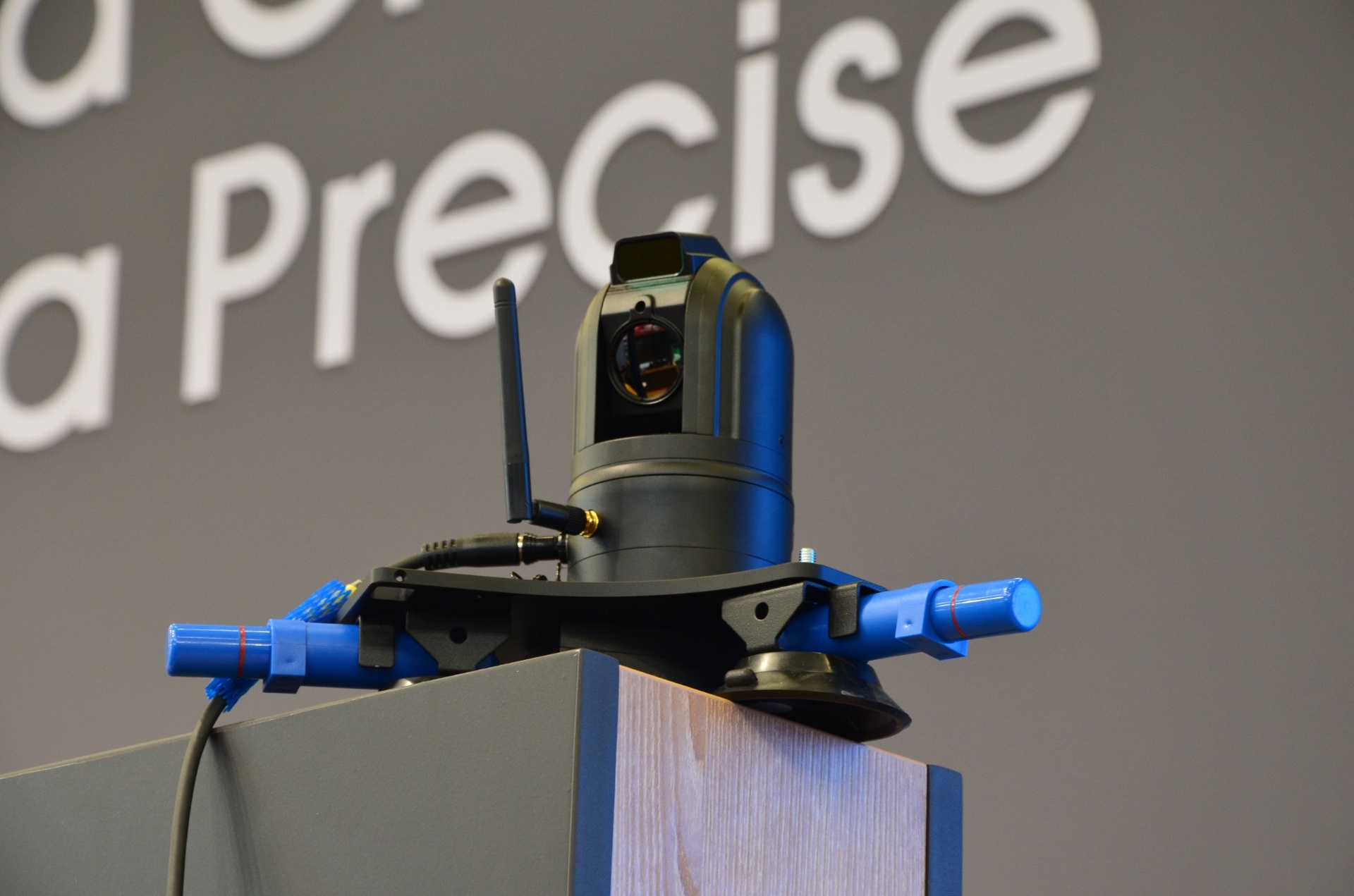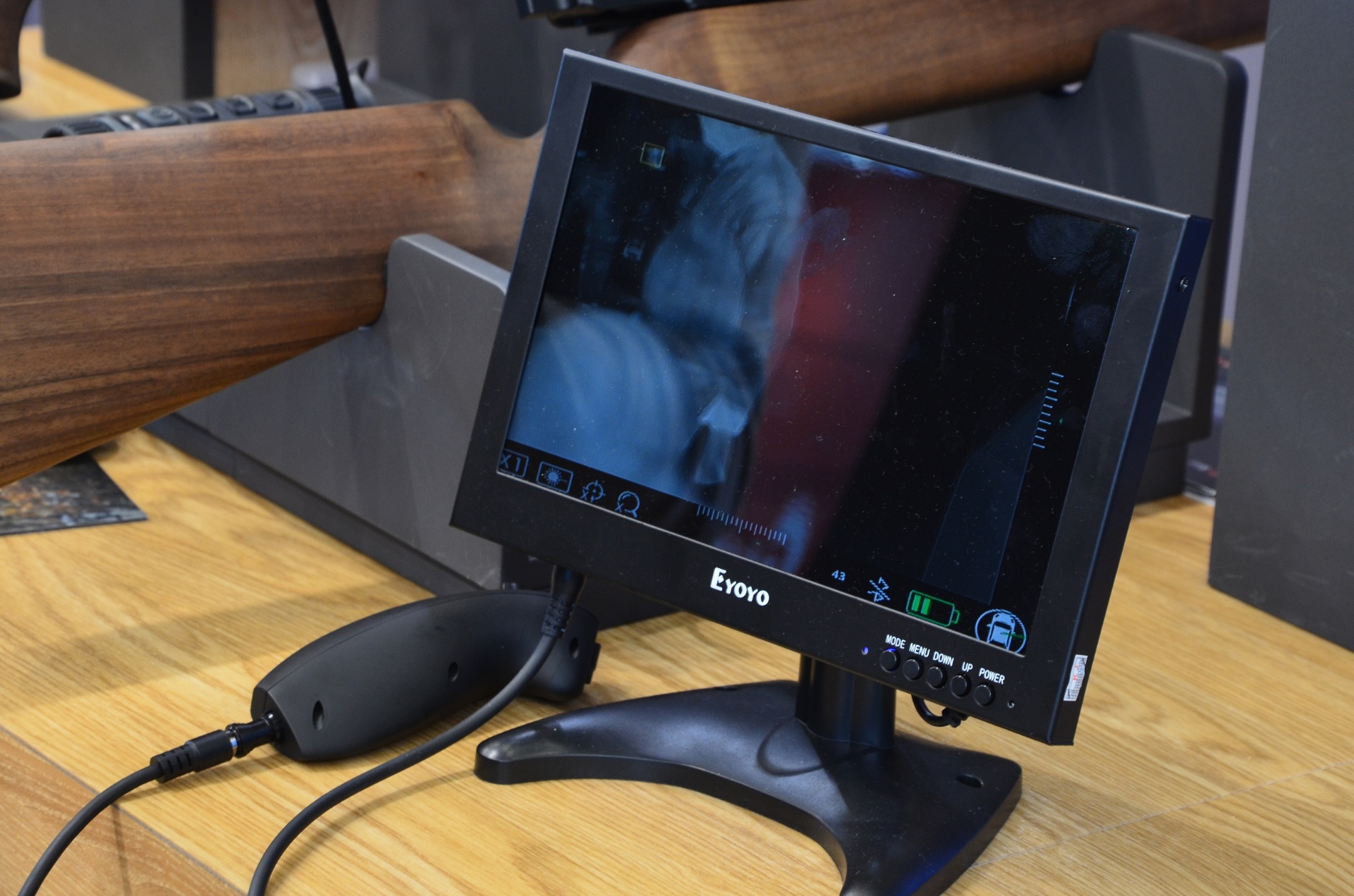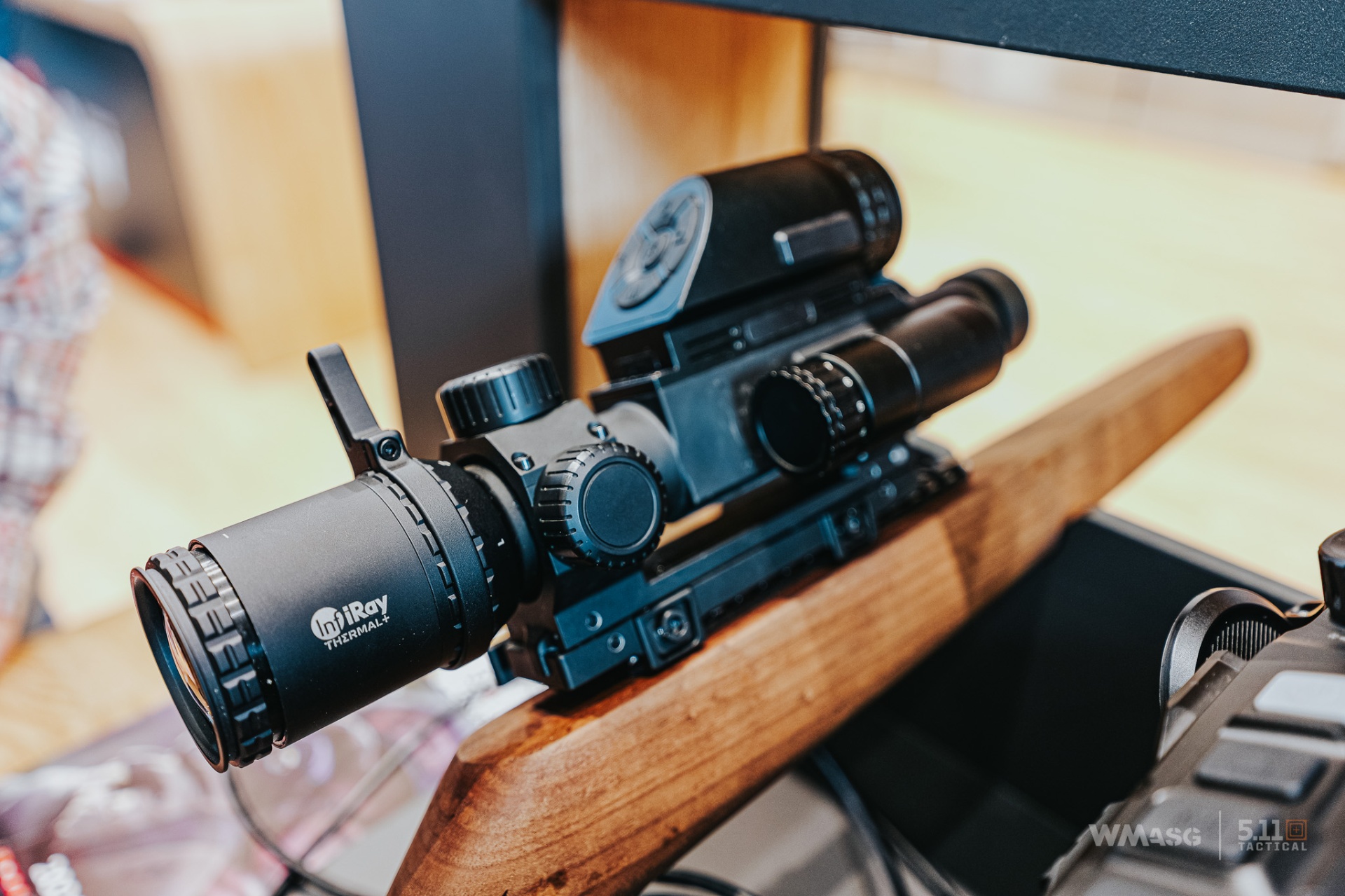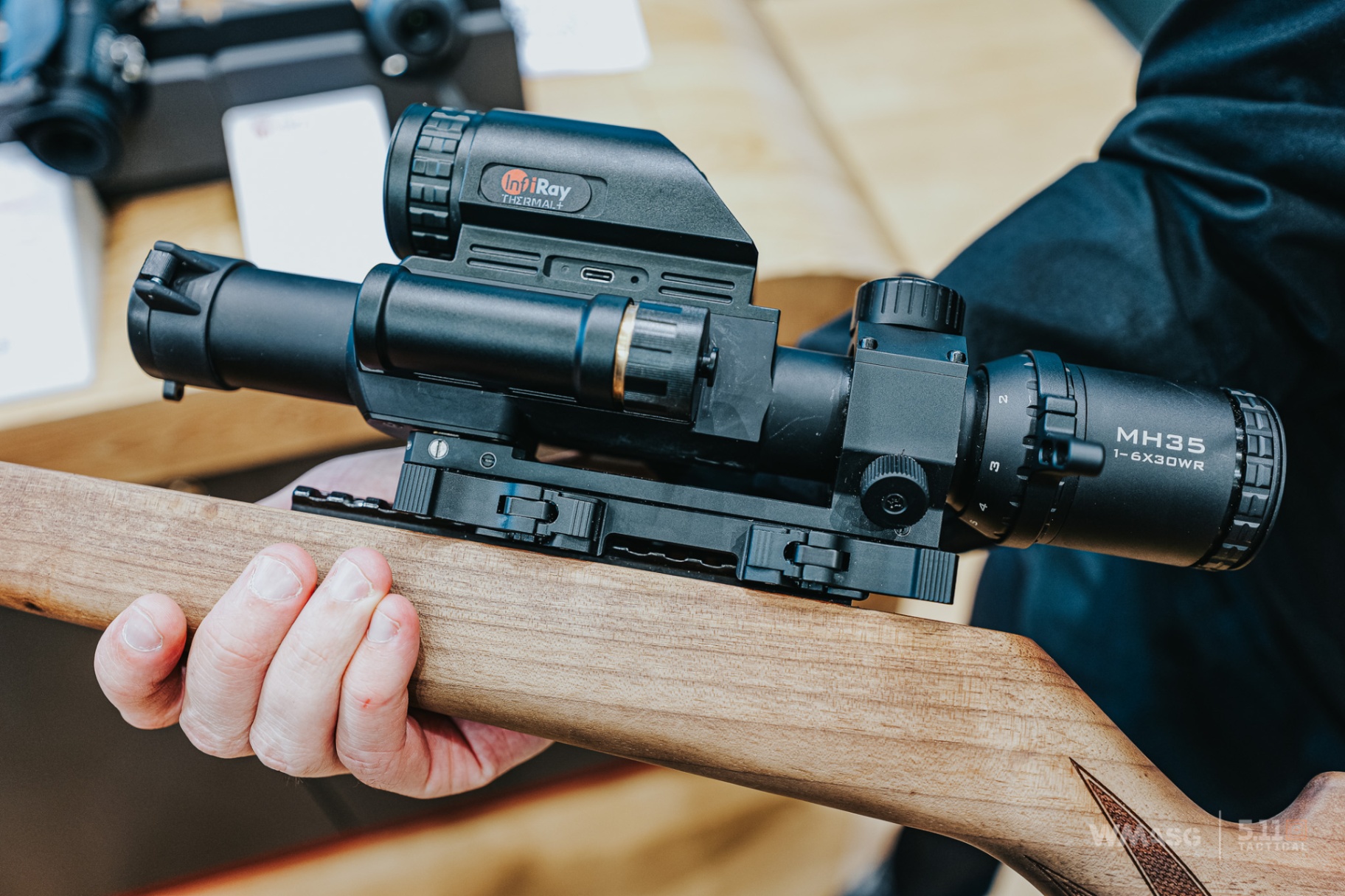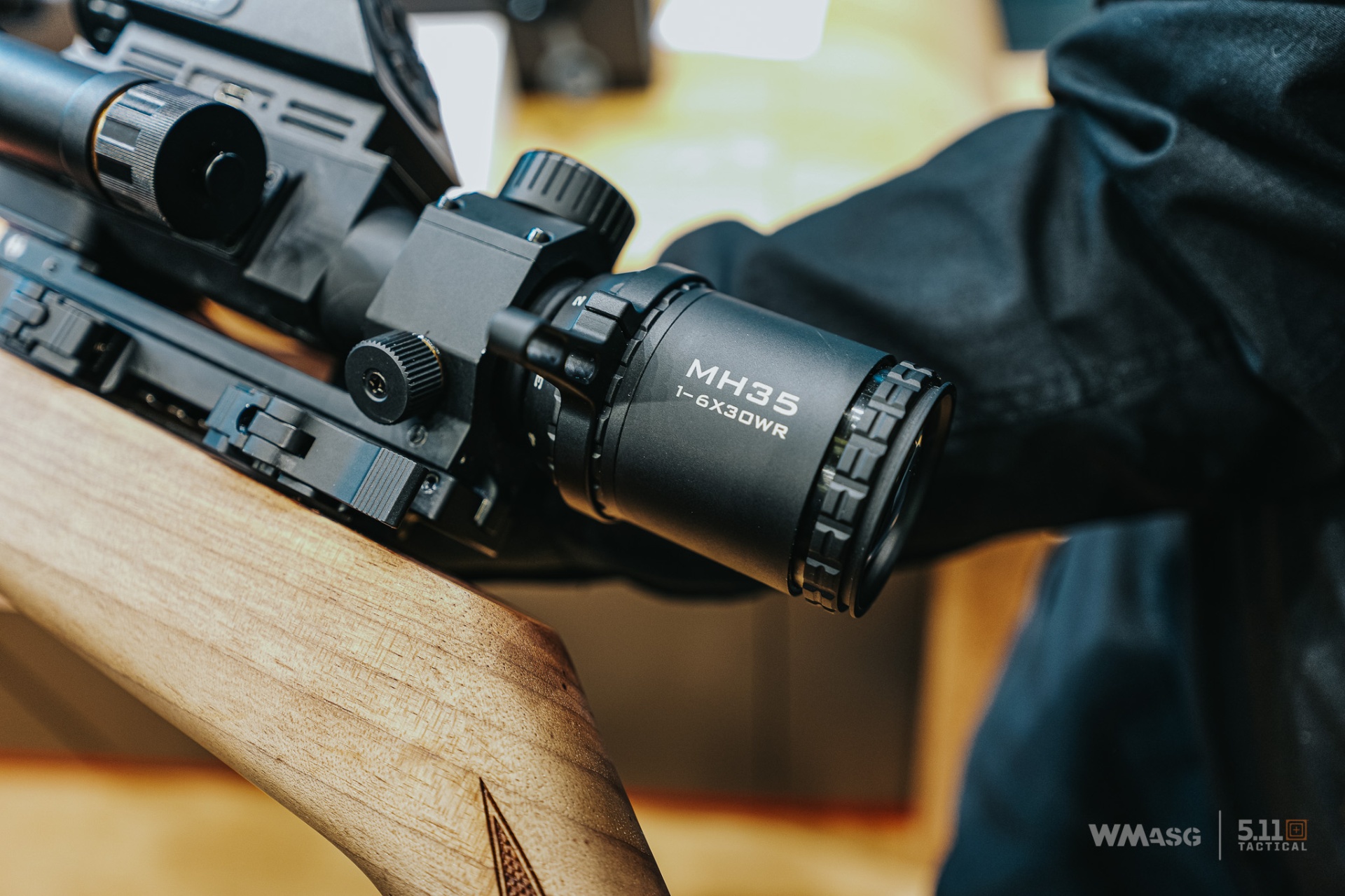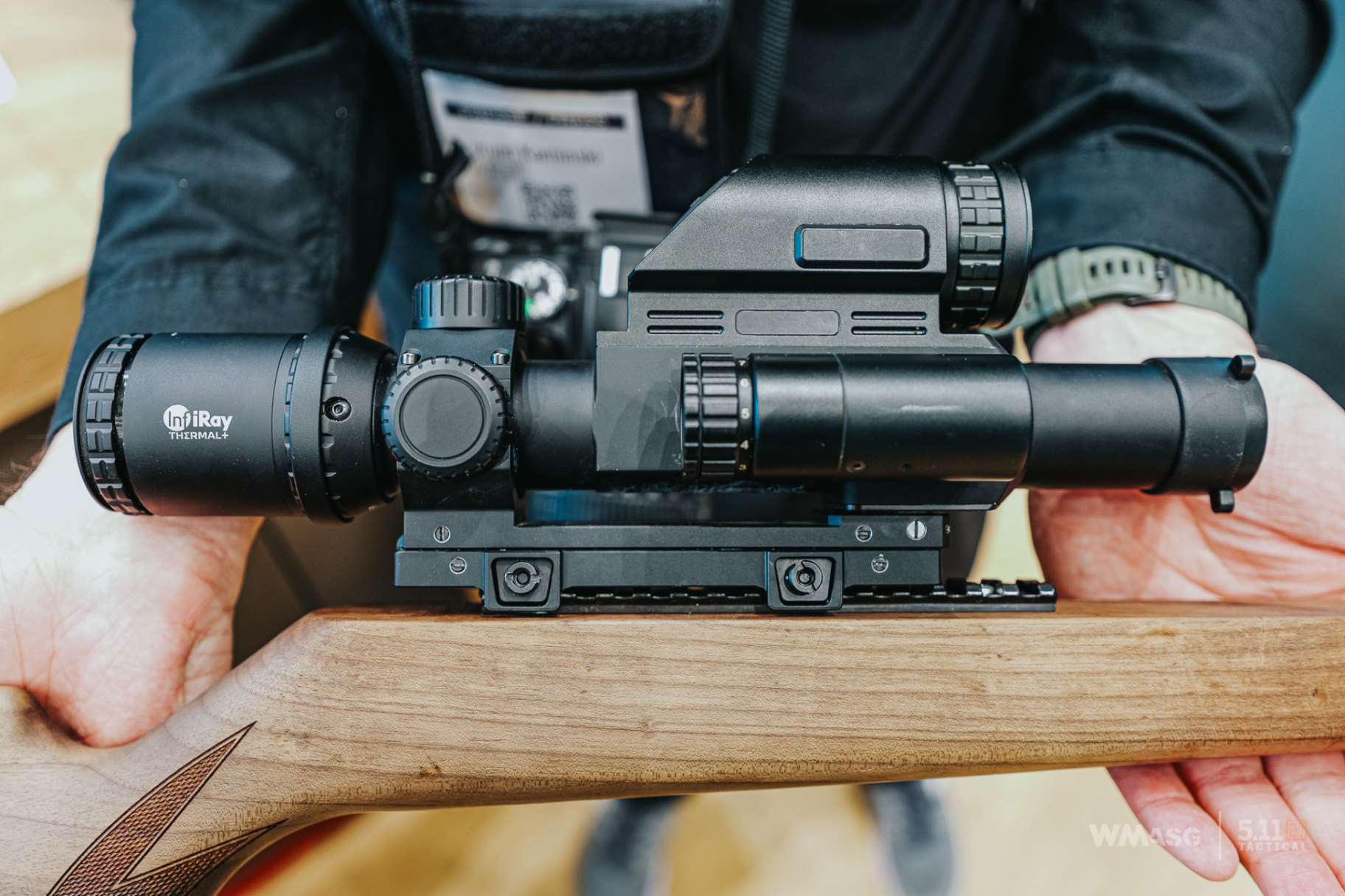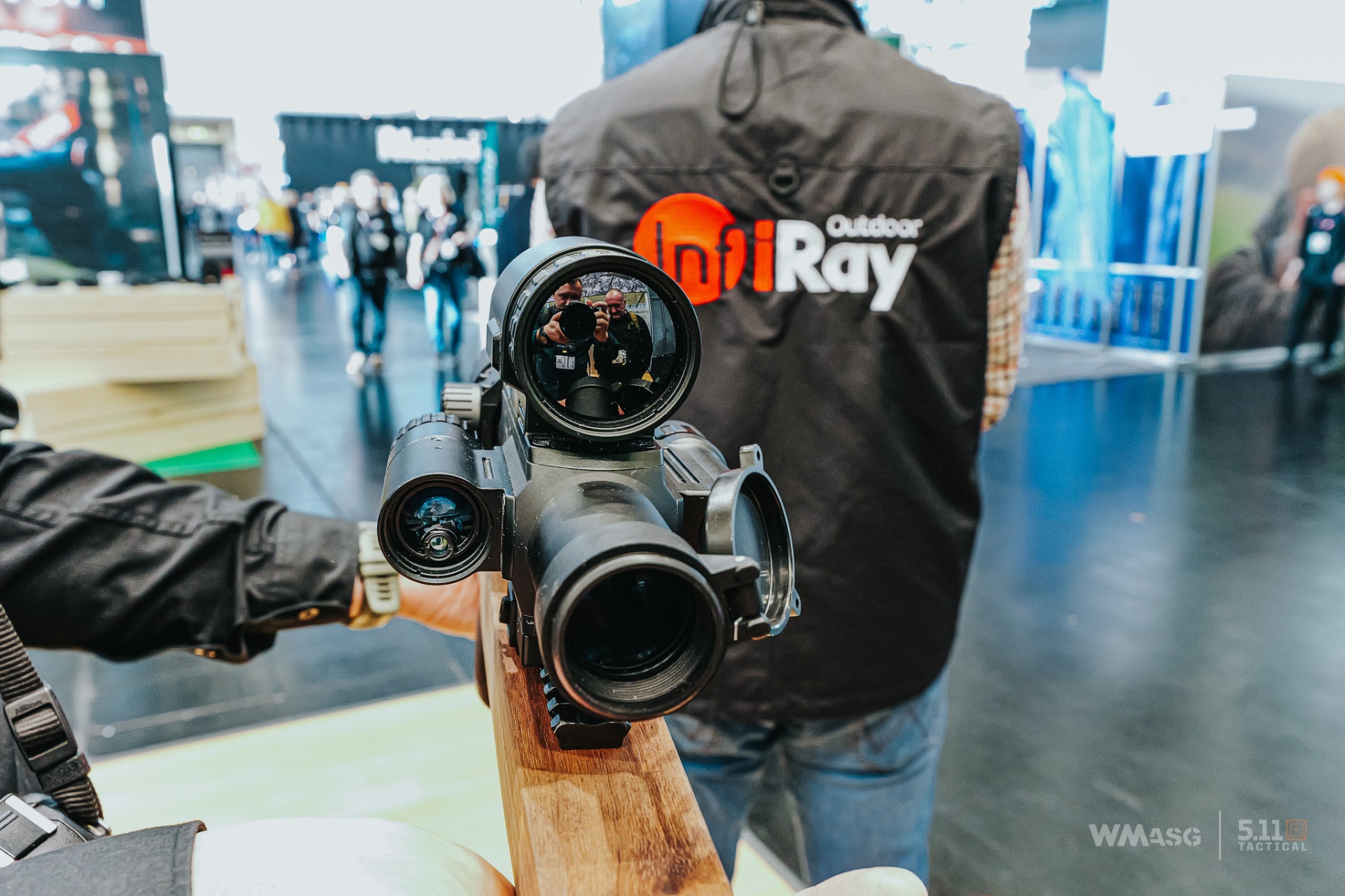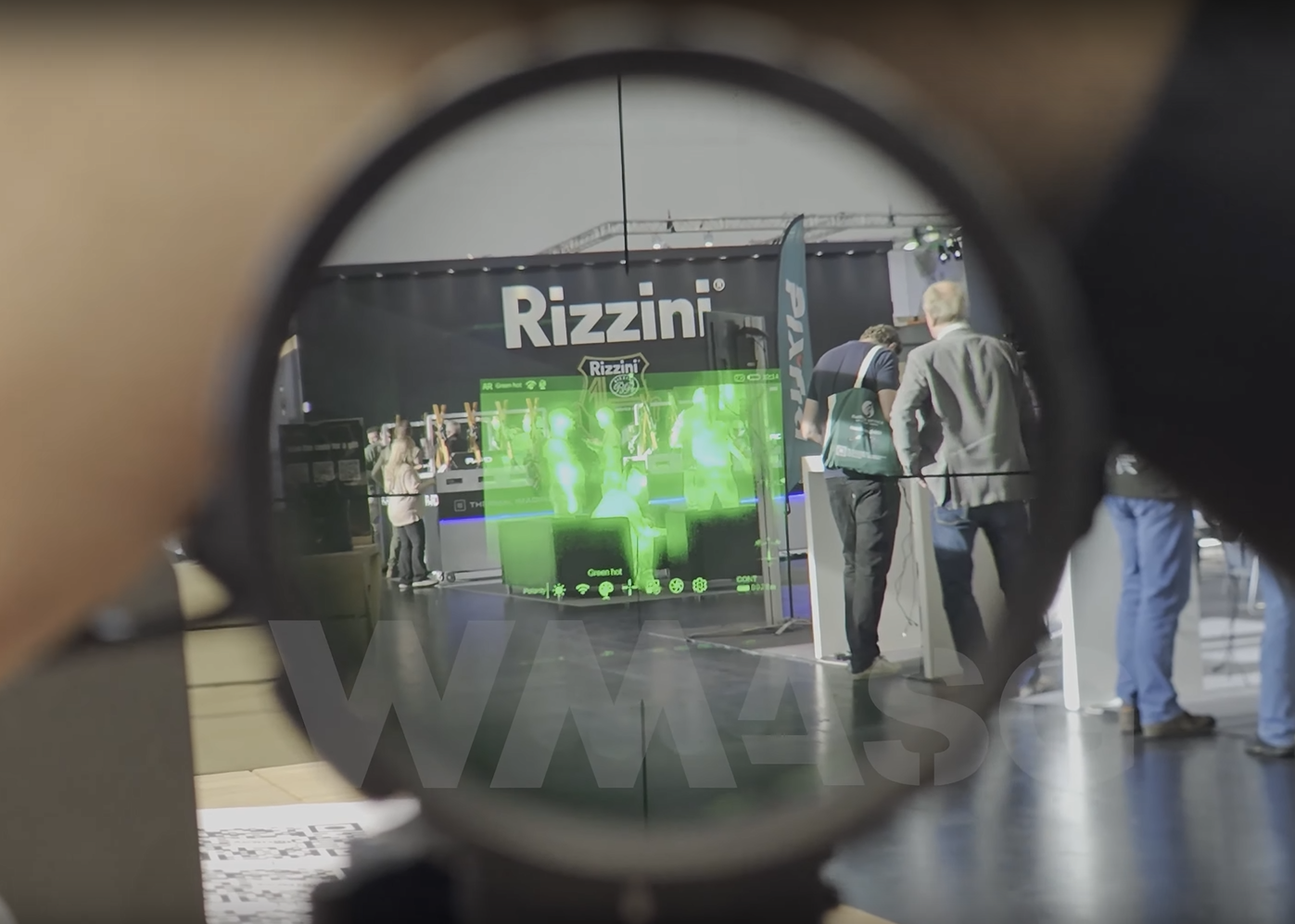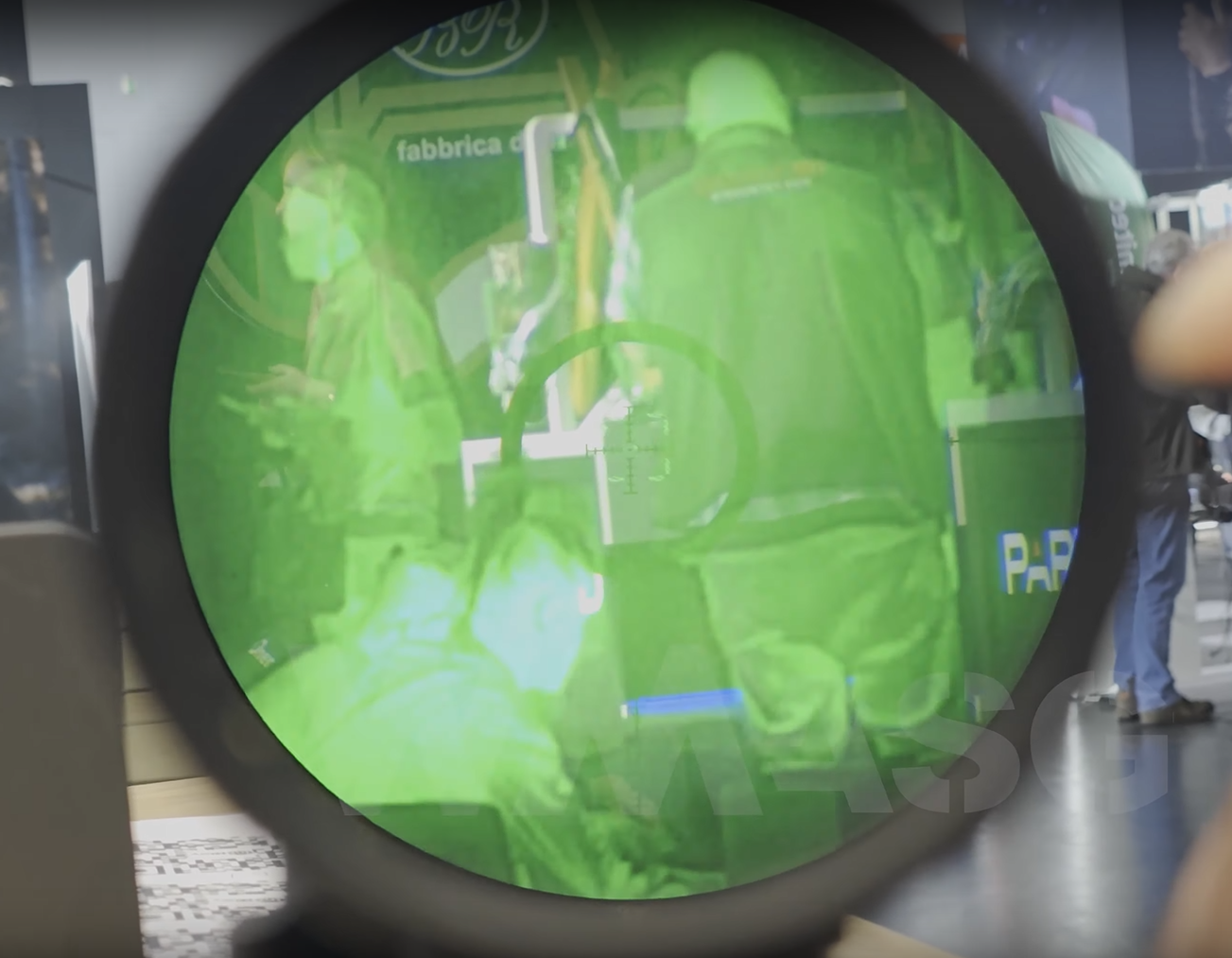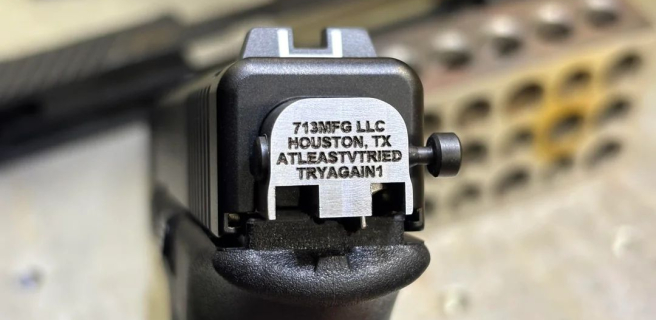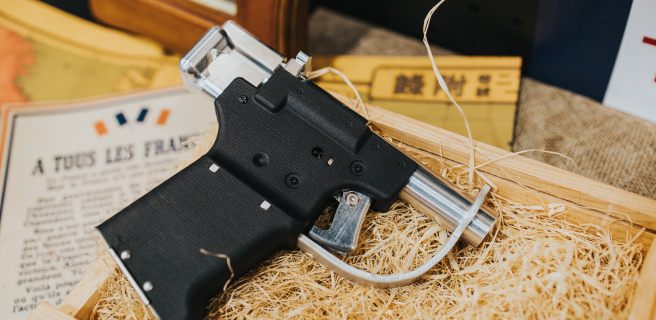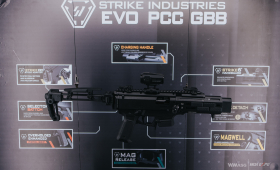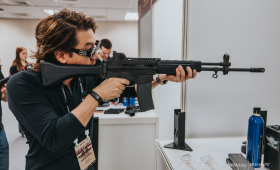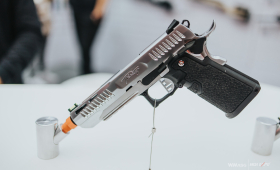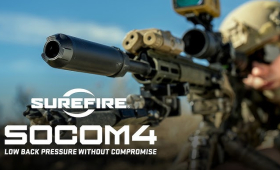We have had the opportunity to write about new products from InfiRay Outdoor several times this year. We mentioned the addition of another model from the TUBE SE line, and during the recently concluded SHOT Show 2024, we could see the more new products: the RH50R from the RICO2 series and HYBRID HYH75W intended for long-range shooting.
We didn't have to wait long for more interesting products. During the IWA Outdoor Classics 2024 fair that ended last weekend, InfiRay Outdoor presented new products that should be available in stores soon: compact, hand-held IRIS thermal imagers, the clip-on MATE MAH50R, the M6T25S remote-controlled camera and the flagship TUBE TS60 sight, which will undoubtedly claim the title of the best sight from the previously described RS75 model.
Slightly less attention was paid to two other, refreshed products. A keen eye could have noticed the TUBE TL35 V3 thermal imaging scope (which is equipped with a 2560x2560 px screen), as well as another model from the FINDER V2 series, which we have already had the opportunity to write about: the FH50R V2.
The photo above shows a preview of the 1920x1080 px thermal sensor with a pixel size of 8 microns. Currently, it is not yet available in any of the devices presented at the fair.
At the very end of the article, we will discuss another groundbreaking device, which has been presented in the form of a functional prototype. It is the MULTI MH35/1-6x30WR model, which is nothing else than a multispectral LPVO 1-6x scope from the innovative Thermal+ series, with a reticle in the first focal plane, which allows to apply a thermal imaging layer to the image seen through a classic optical sight! We had the opportunity to write about this technology earlier, in news regarding the FAST FAL19, FAST FAH25 and DUAL DP19.
The TUBE TS60
Not so long ago, the sight of the advanced RS75 model was clearly associated with the absolute top shelf of thermal imaging sights available on the civilian market. However, InfiRay Outdoor did not rest, and based on its experience with the mentioned device, it introduced the TUBE TS60 to its offer.
This new sight, which looks like a classic scope, in accordance with the manufacturer's nomenclature, is equipped with a sensor with a resolution of 1280x1024 px @ 12 μm. Now, however, its NETD thermal sensitivity has increased to <18 mK and the refresh rate is 50 Hz. The full technical specification of this model are now available at the manufacturer's website, you can also see them below.
Attention is drawn to the use of an efficient, double power source (built-in 6600 mAh battery and replaceable 18650 cell with a capacity of 3200 mAh), low the value of the basic optical magnification, which gives a wide field of view, a large AMOLED 1.03" 2560x2560 px display and up to 128 GB of memory for storing photos and videos with sound. The only thing missing is a built-in laser rangefinder, fortunately, the device provides support for an external LRF module made by InfiRay Outdoor.
Thanks to the manufacturer, we had the opportunity to take photos and record a short video showing the capabilities of this new, flagship model. The presented image maintained high quality even when using the higher values of the digital magnification.
A big surprise may be the affordable price of TUBE TS60, which was below 7,000 EUR!
The MATE MAH50R
The new version of the popular clip-on sight brings many improvements compared to its predecessor. Among them, it is impossible to ignore the sensor, which thermal sensitivity has been increased to <18 mK.
In addition, the MATE MAH50R is now factory-equipped with a laser rangefinder module (with a range of 1200 meters), and the thermal imager software which allows for quick ballistic calculations.
The new attachment works with optical sights with a magnification of up to 10x, and will be sold complete with two replaceable IBP-6 magnetic batteries (the device itself also has a built-in battery with a capacity of 1500 mAh) and offers the user numerous additional functions.
The IRIS IL19 & IL35
The manufacturer's offer also includes new, compact, hand-held IRIS thermal imaging monoculars, equipped (in the IL line) with a 384x288 px @ 12 μm sensor with <20 mK thermal sensitivity and 50 Hz refresh rate. Advanced Reality+ algorithms and F0.9 optics (19 mm or 35 mm) are responsible for the excellent image quality. The image is displayed on an AMOLED screen with a resolution of 1024x768 pixels.
Fans of universal solutions should be happy with the way the thermal imager is powered as it uses a popular, replaceable 18650 battery, which can be enough for up to 5 hours of continuous use. The manufacturer also took care of numerous additional functions, including a photo and video recorder with sound.
Weighing approximately 330 grams, the IRIS IL19 and IL35 monoculars differ in the size of the optics used, which affects the basic optical magnification (2x and 4x), and therefore also the maximum field of view (13.8° x 10.4° or 7.5 ° x 5.7°). Naturally, these differences are also visible in the detection range of the new thermal imagers. The IRIS IL19 model is able to detect an object the size of a human from a distance of 1,300 meters, and the IL35 from 1,800 meters.
The M6T25S
The remotely controlled cameras from the InfiRay OutdoorM6 series have also received an update. These are small thermal imagers designed to be mounted on the roof of a vehicle, which allow for observations without leaving the interior. They enable a 360 degree horizontal rotation, as well as 180 degrees vertical rotation.
Another model has just been added to the manufacturer's offer, the M6T25S, with thermal sensitivity reaching <30 mK. The device's software uses AI algorithms to facilitate detection, identification and tracking of hot objects.
The new camera is powered by a replaceable battery, which in favorable conditions allows for observations for up to 7 hours. It is also possible to power the thermal imager from the car's cigarette lighter socket.
The MULTI MH35/1-6x30WR
Since the first information about the InfiRay Outdoor multispectral devices from the Thermal+ series appeared on the market, the manufacturer has been showing images on its website related to the use of this technology in traditional rifle scopes. Despite this, within two years this solution was used only on an observation monocular and two red dot sights. This may soon change.
It is difficult to find information about the MULTI MH35/1-6x30WR in the descriptions of new products from the IWA 2024 fair, because it is not a finished product yet, but only a prototype of the device. We had the opportunity to test its operation... and we keep our fingers crossed, because it looks very promising.
The problem of universality of solutions in the field of classic optical and thermal sights has been known for a long time. While the advantages of thermal imagers remain invaluable at night, during the day the highest image quality and proper aiming precision are only guaranteed by traditional optics. The search for a solution that would not give up the advantages of both systems has so far led the market in two directions, neither of which is ideal.
One of them is to use a thermal clip-on attachment on a scope. When used with a proper mount, it can quickly transform a day time sight into a thermal imaging one. However, this means that the user gives up the traditional optical channel until the attachement is removed.
The second solution is to use multispectral rifle scopes (e.g. the Pulsar Thermion DUO DXP50 and DXP55, or PARD TD32- 70), which enable observation in various wavelength ranges. However, in such devices, the CMOS matrix is responsible for the "classic" layer, so the quality of imaging depends on both the sensor itself and its resolution, as well as the screen used in the sight. In multispectral products available on the market so far, it is debatable whether this method of operation was able to match traditional optics (also in terms of the comfort of use).
If work on the MULTI MH35/1-6x30WR prototype is successful, an alternative to the above solutions will appear on the market and it will be difficult to ignore it. InfiRay Outdoor wants to create a classic LPVO scope (with a 30 mm lens and 1-6x magnification), into which the image from the thermal imaging module placed on top of the viewfinder is reflected. This will allow for simultaneous observation both image types, similarly to the FAST series sights without magnification (FAL19 and FAH25), DPS-TH (prototype), DRS-TH hybrid red dot sights from Holosun, or the (still being developed) Siclops by Hexion Tech from Strike Industries.
The prototype presented during the IWA 2024 was functional, at least to the extent that allowed to see the technology of combining both layers worked. While we are aware that a test lasting several minutes in a closed hall during the fair cannot clearly determine all the advantages and disadvantages of the system, the quality of the LPVO scope was satisfactory. It had the narrow frame of the tube surrounding a bright and sharp image, a smoothly working magnification adjustment knob and a clear first focal plane reticle, which will further facilitate doing necessary corrections when shooting at various ranges.
The green thermal imaging layer was clearly visible in moderately strong lighting. The sensor used, with a resolution of 640x512 pixels (12 μm, <25 mK), offered sufficient quality to present the user with a clear image in the full LPVO magnification range. According to the manufacturer's data, it is displayed on an FHD (1920x1080 px) screen with high transparency. The system's power supply allows for 6 hours of operation of the thermal imager (the photos show the compartment for a replaceable Li-Ion battery and the USB-C charging port). Naturally, using the functionality of the LPVO scope itself does not require any power.
According to the collected data, the sensor allows the detection of an object the size of a human from a distance of up to 1,800 meters. The device allows the use of both the LPVO scope (after turning off the thermal imaging module) and the thermal imaging only (after closing the LPVO lens with a flip-up cover), which increases the contrast of this layer when used during the day.
The weight of the entire system (including the integrated LRF module) is 1470 grams. However, the representative of InfiRay Outdoor noted that the device is still in the prototype phase, so some features or specifications may change.

